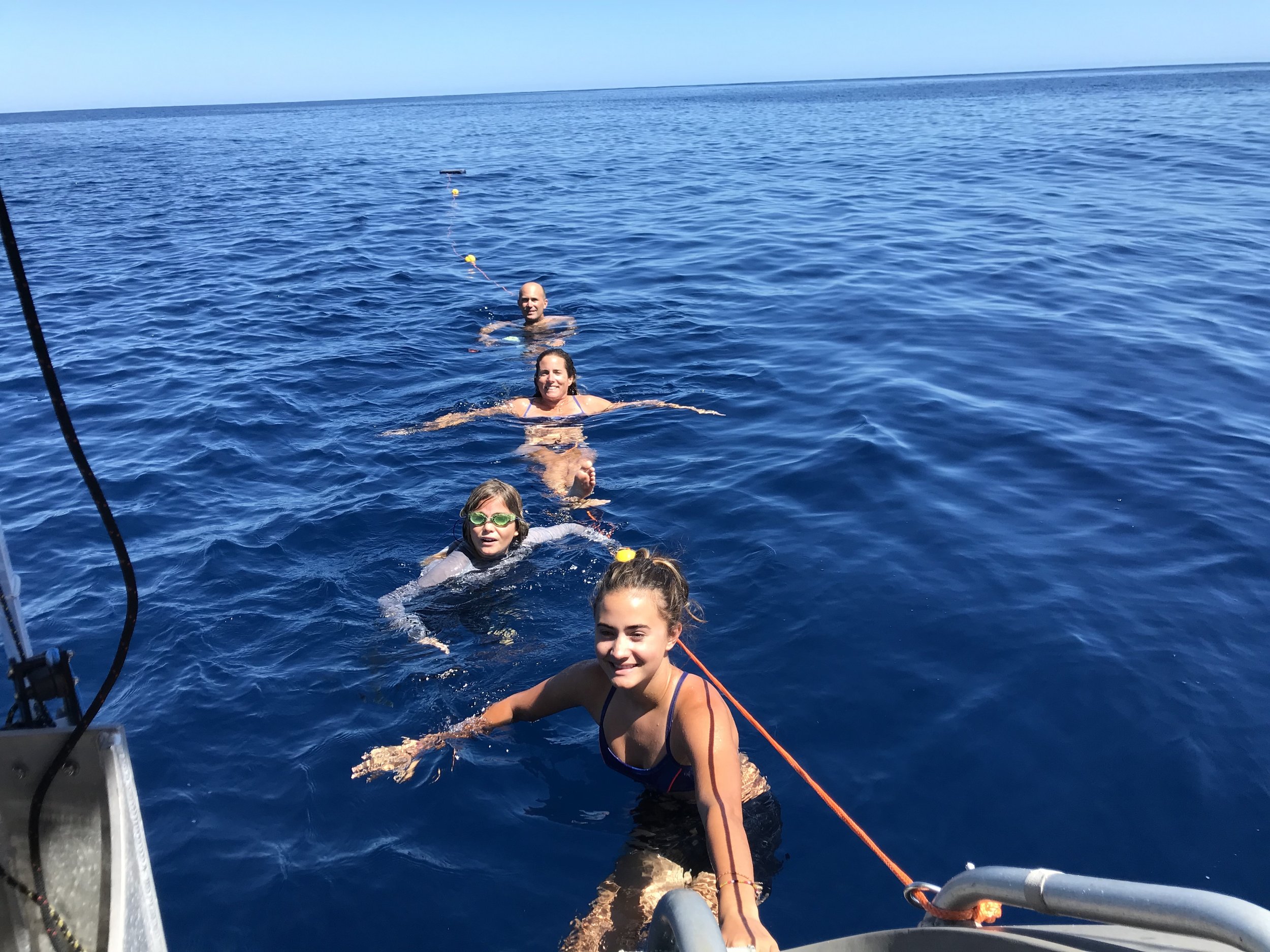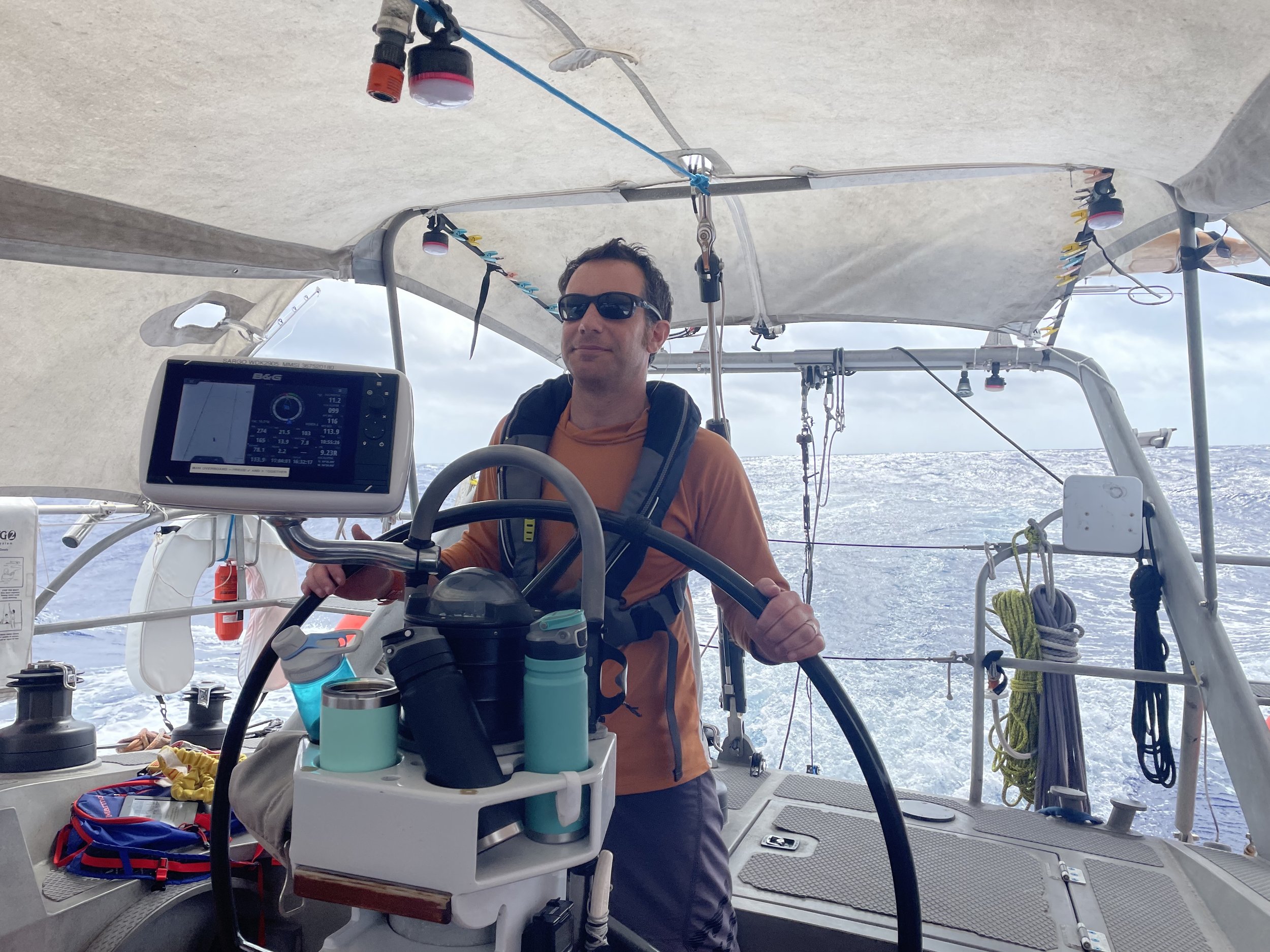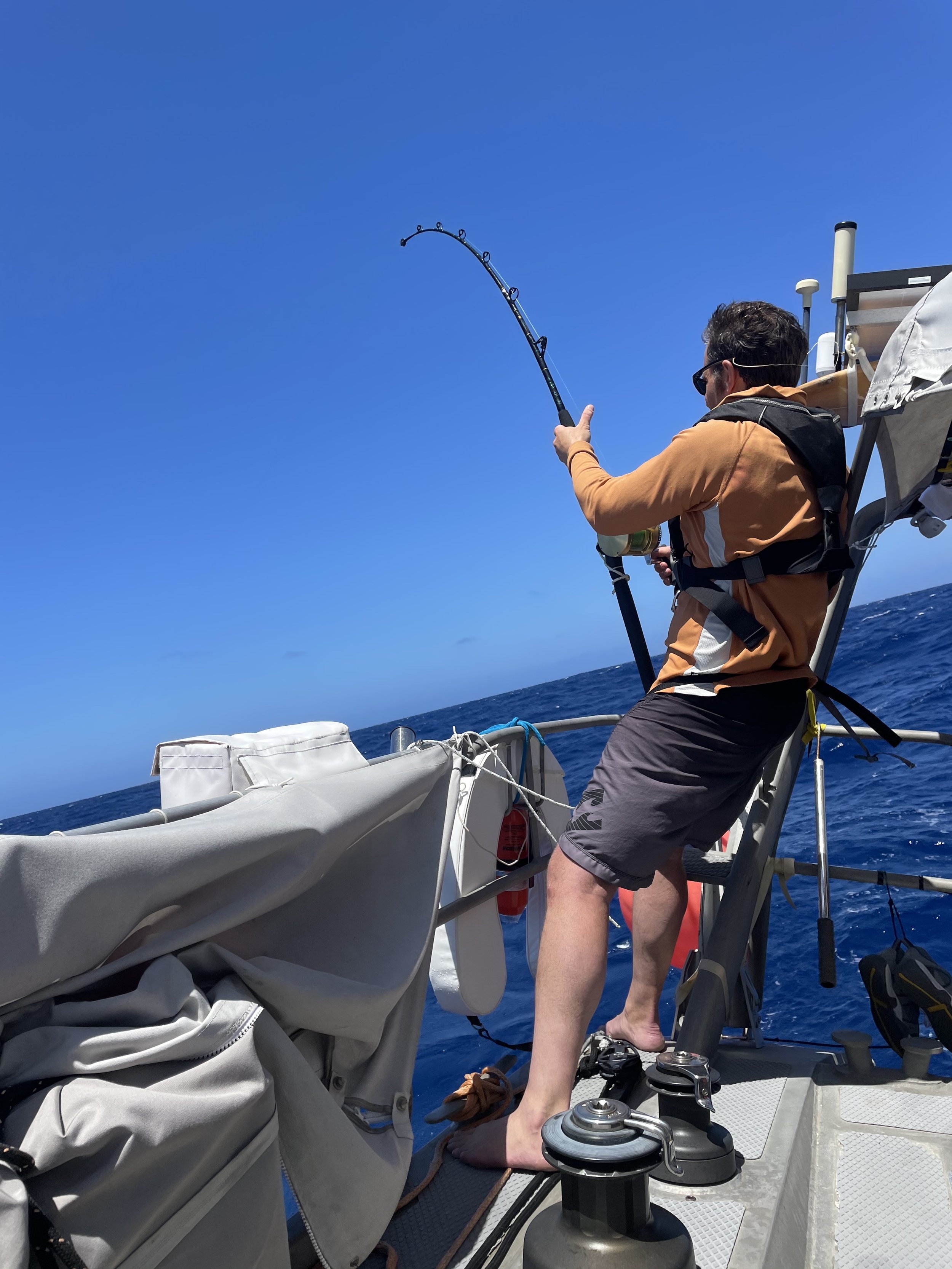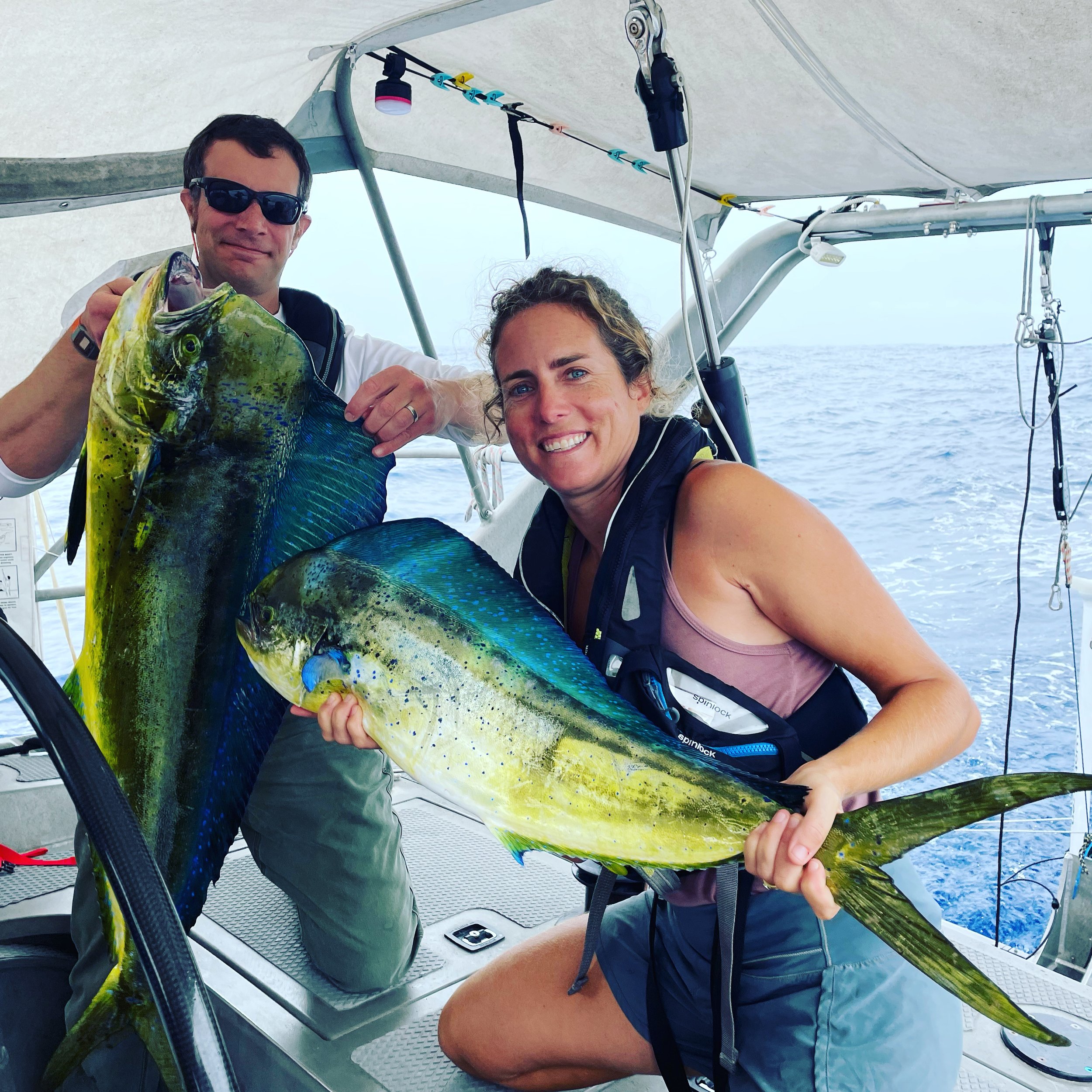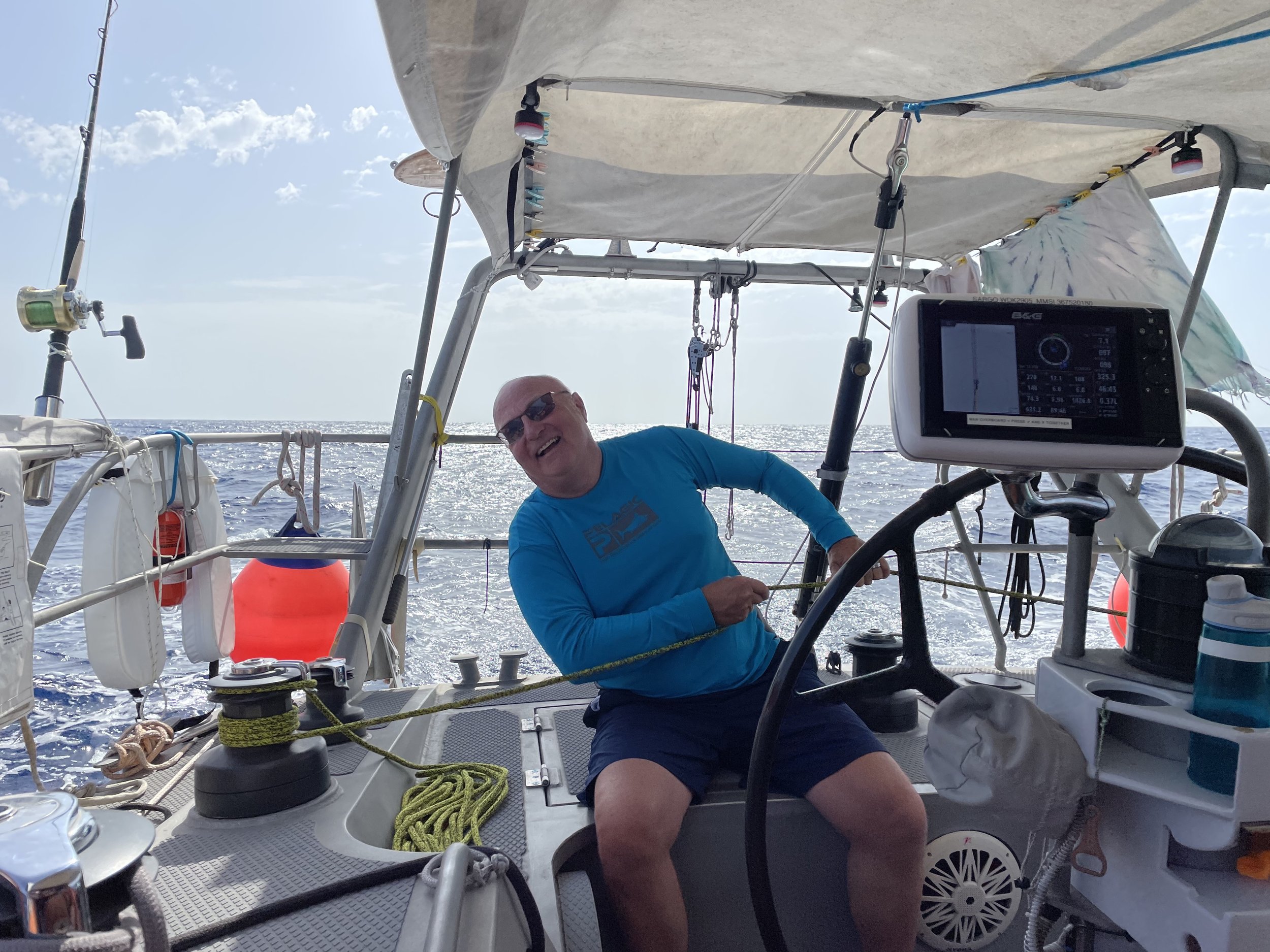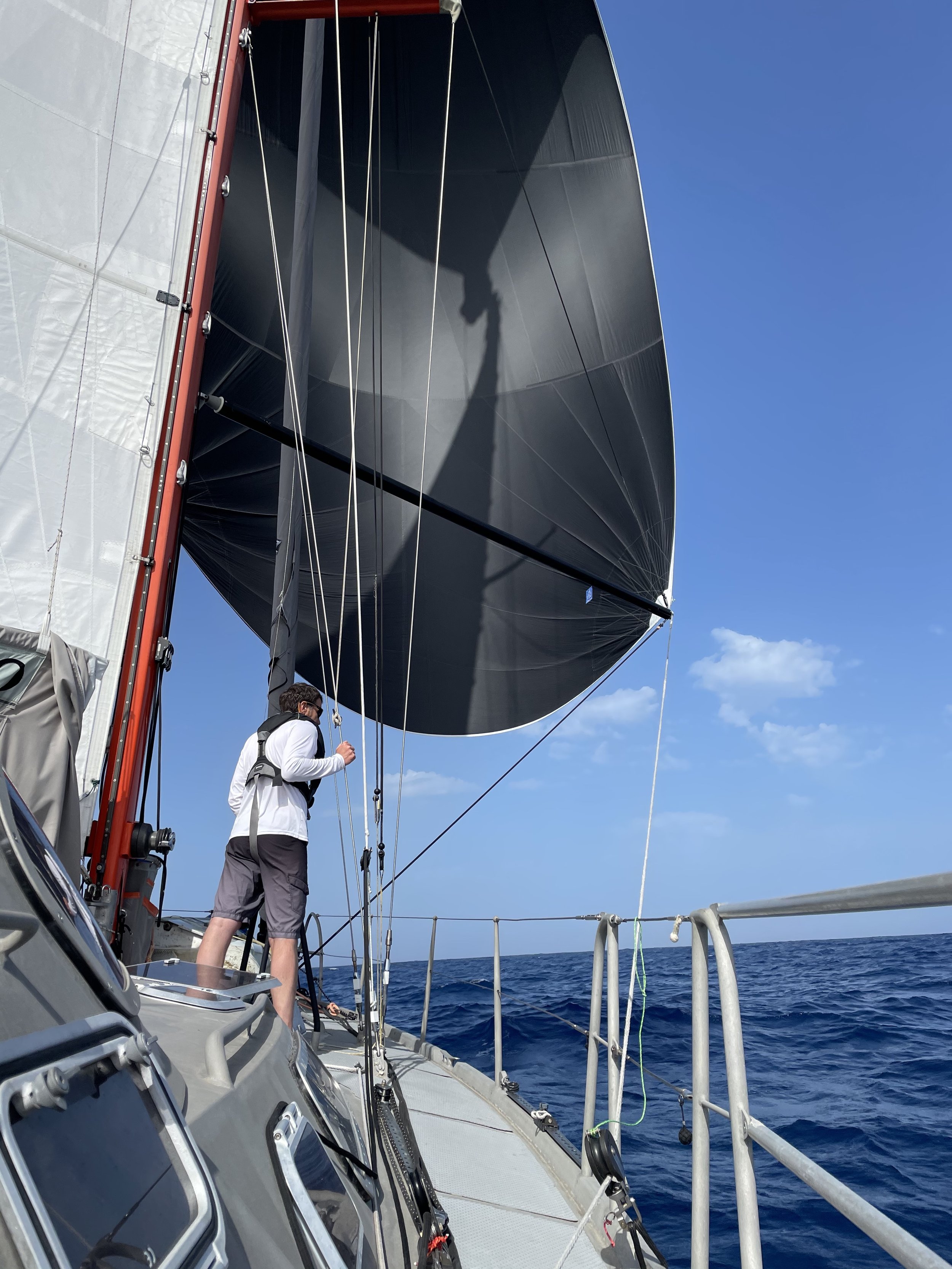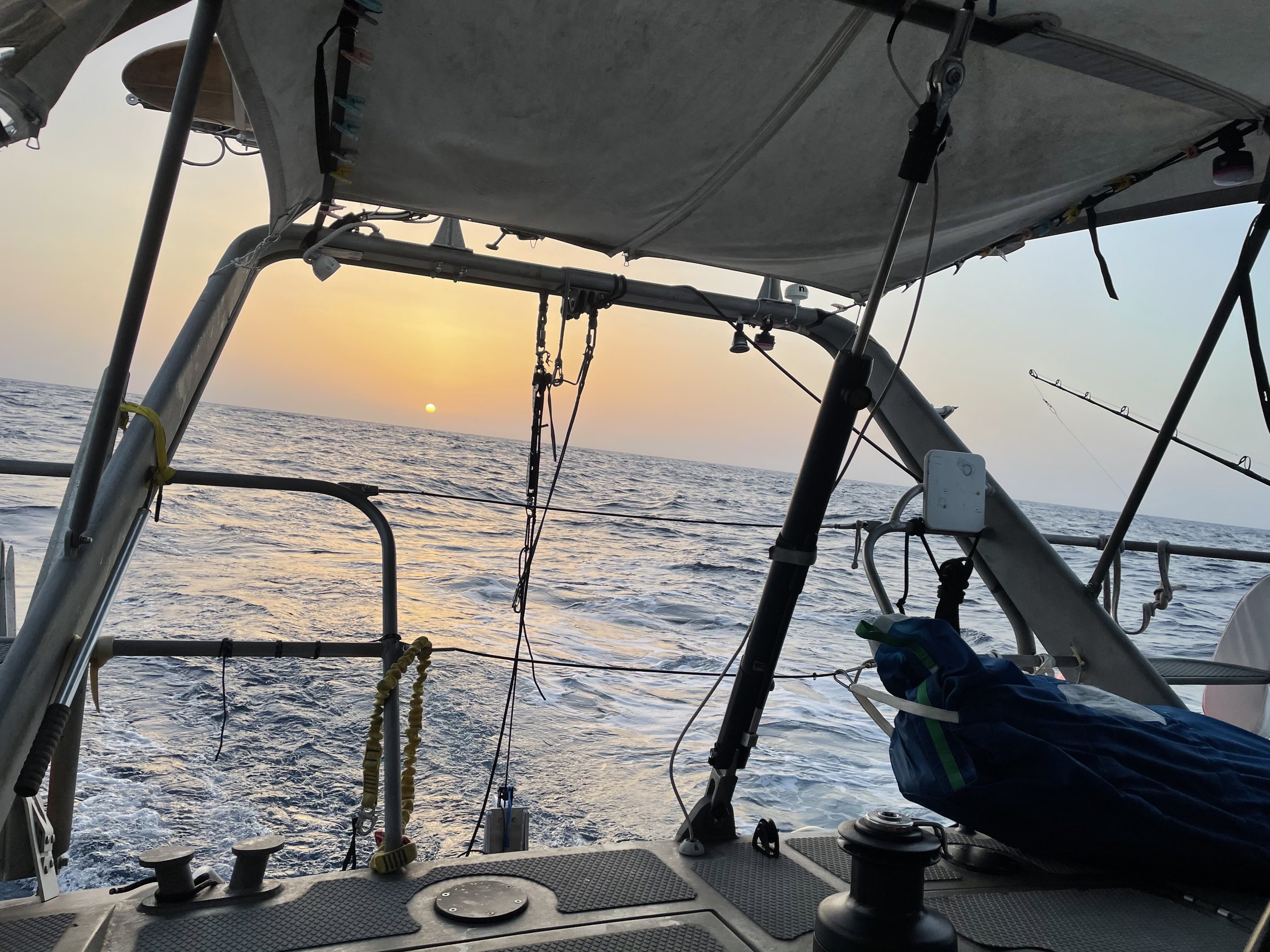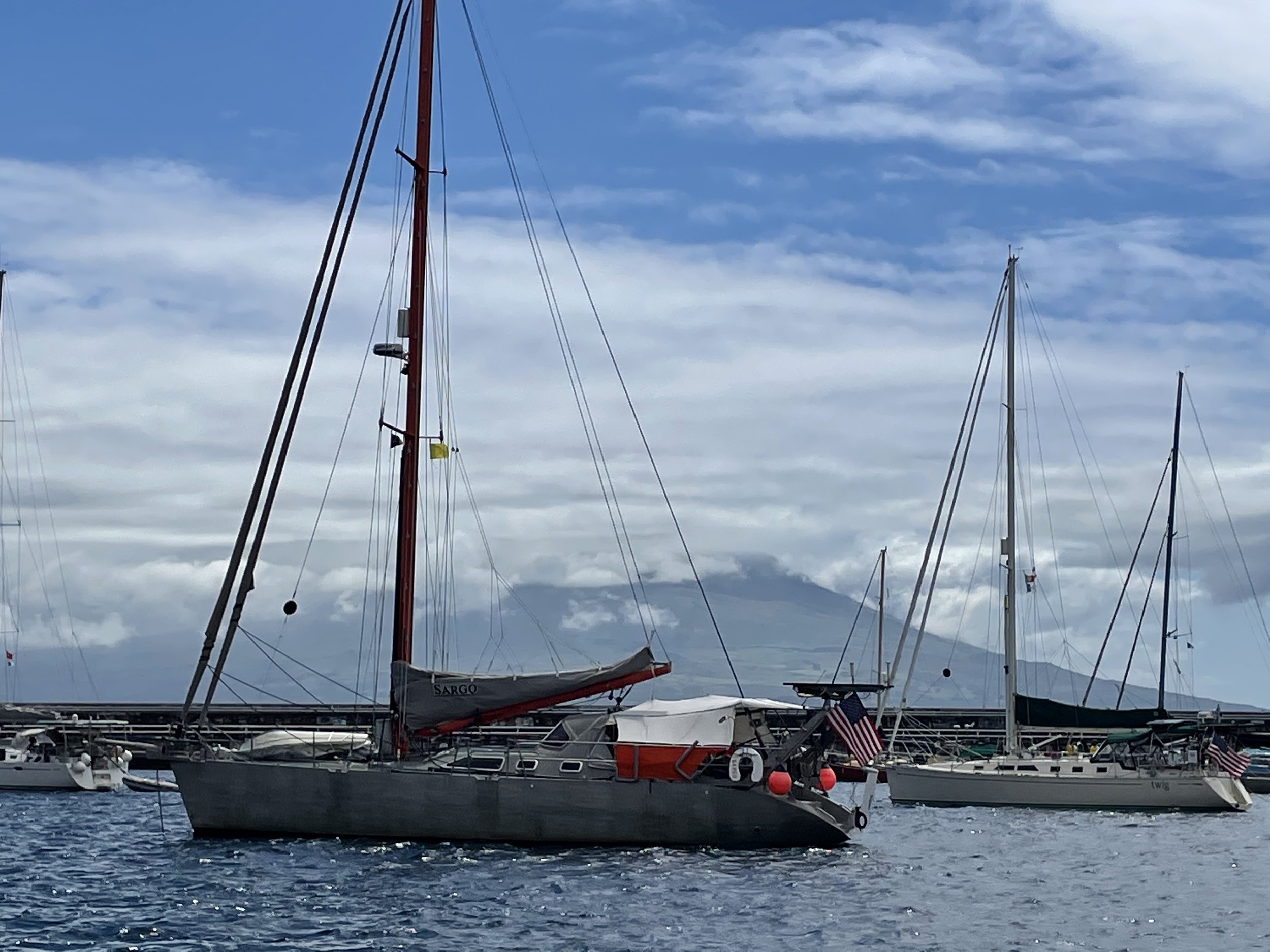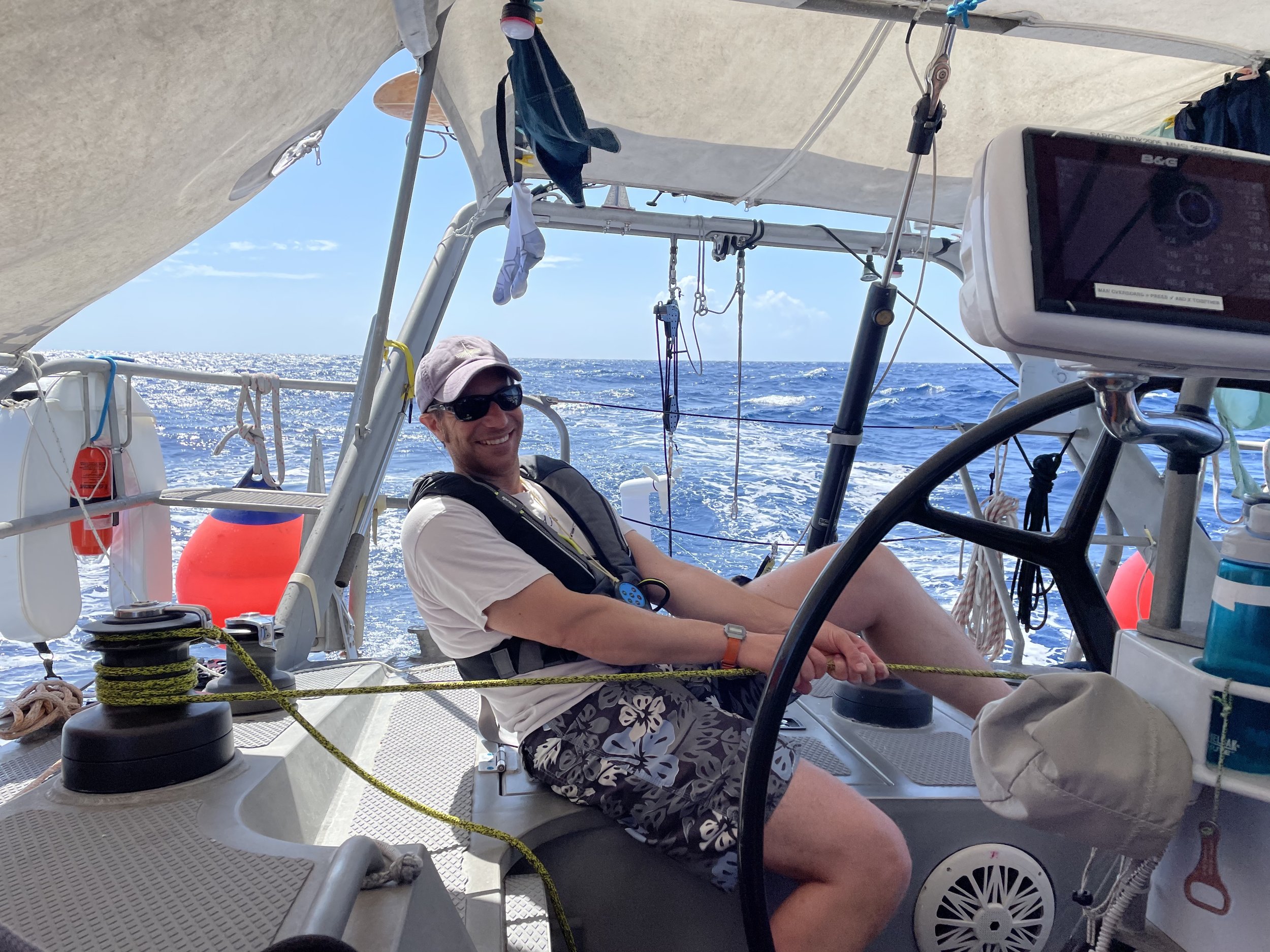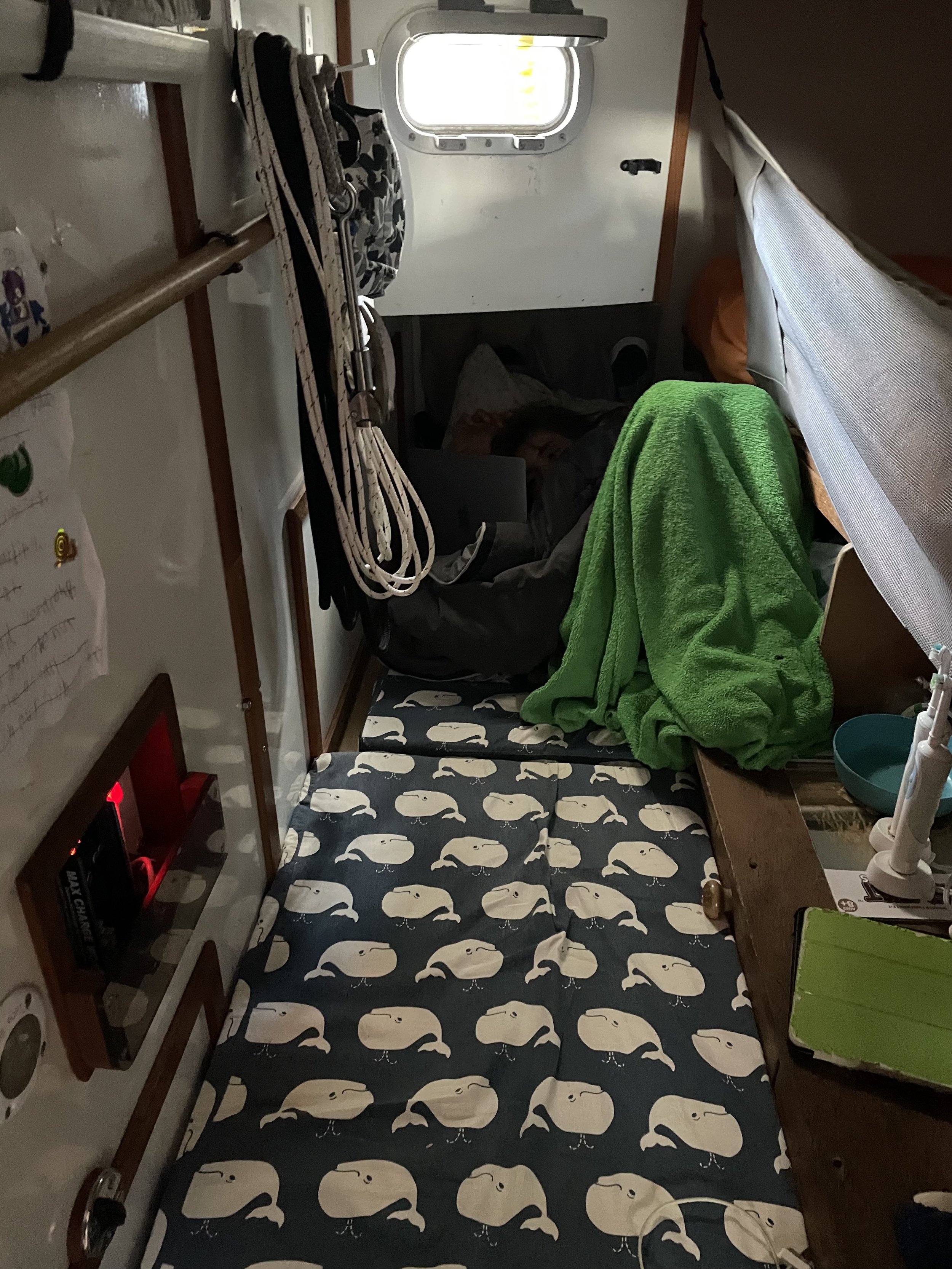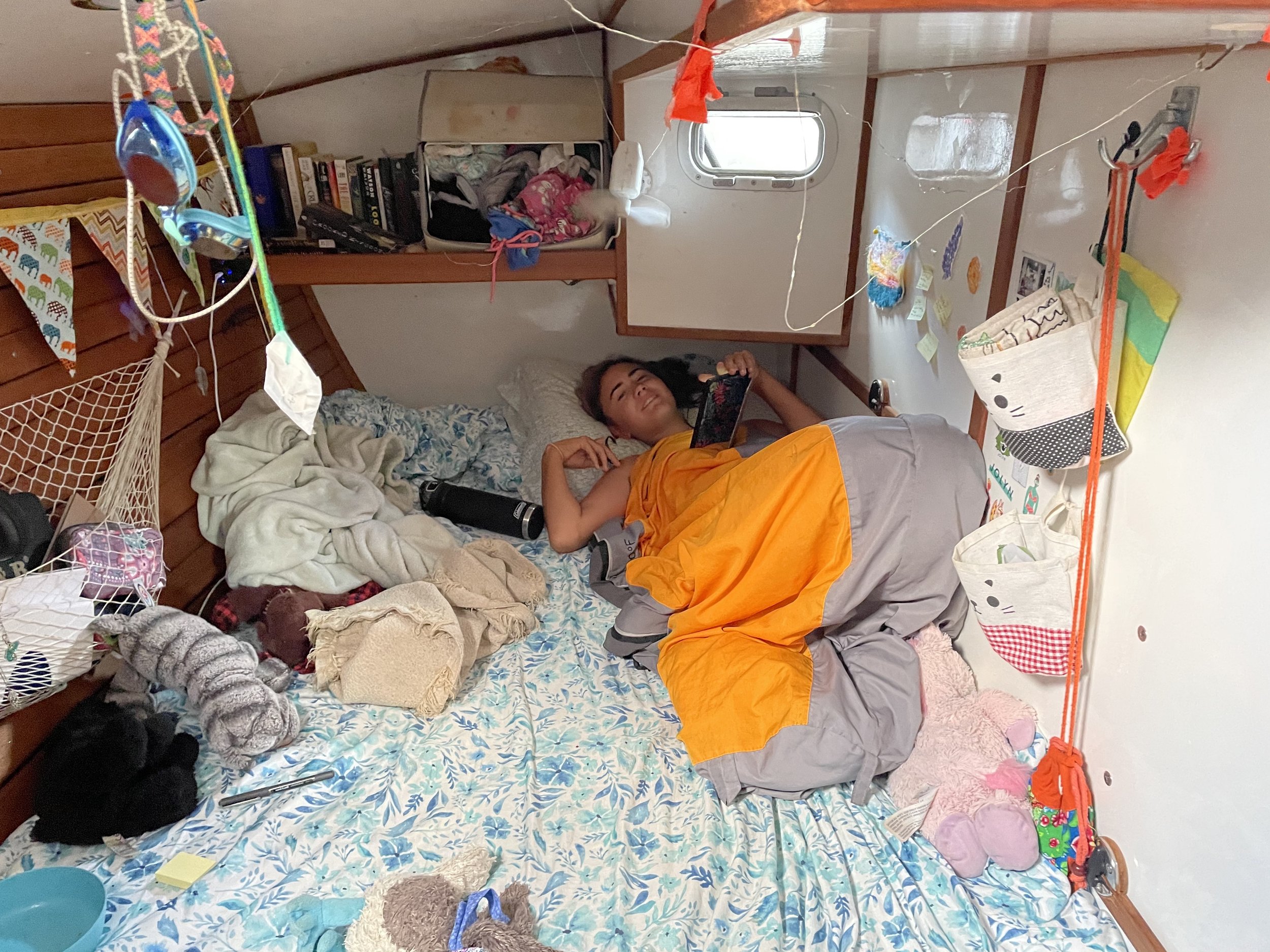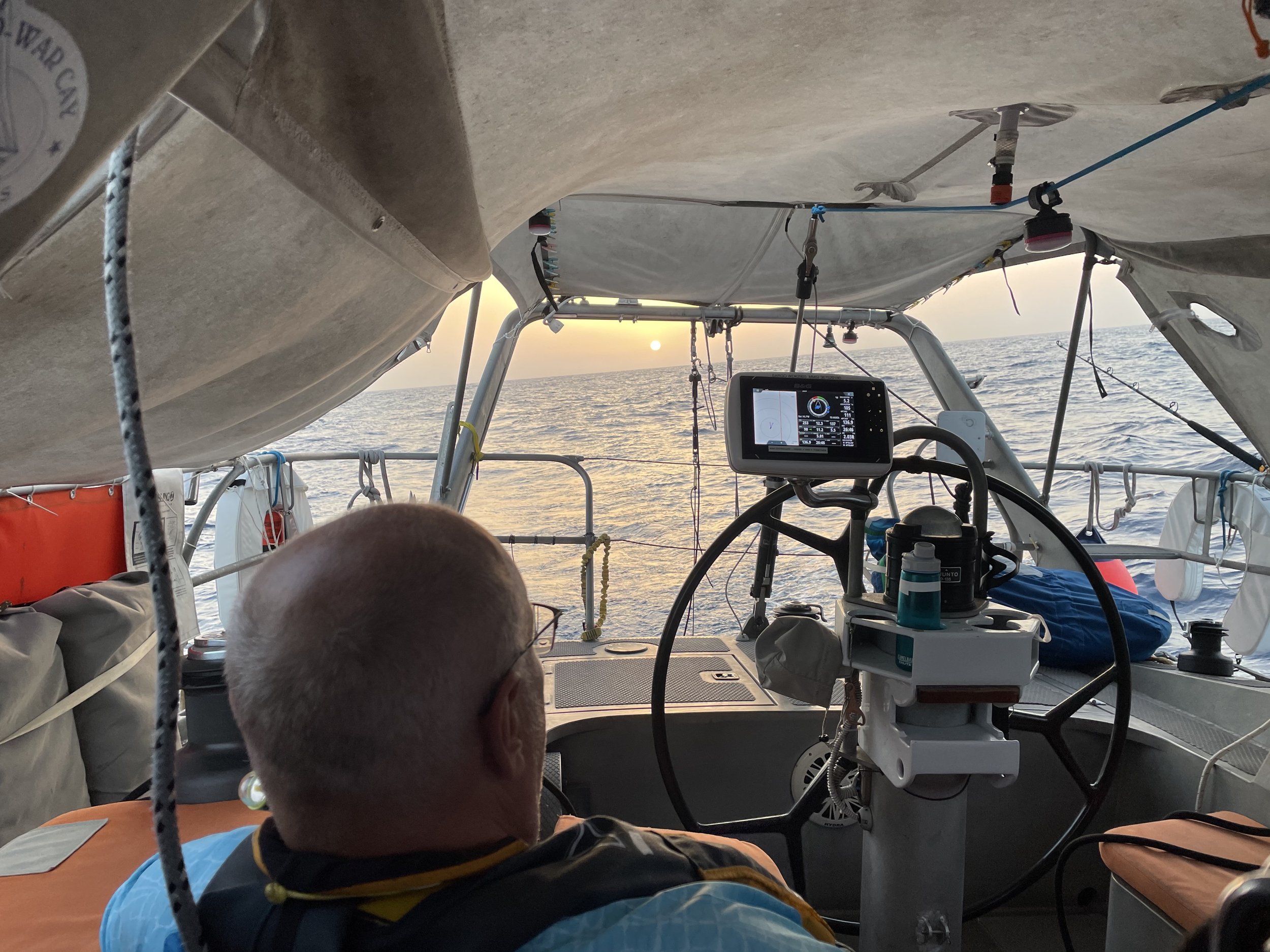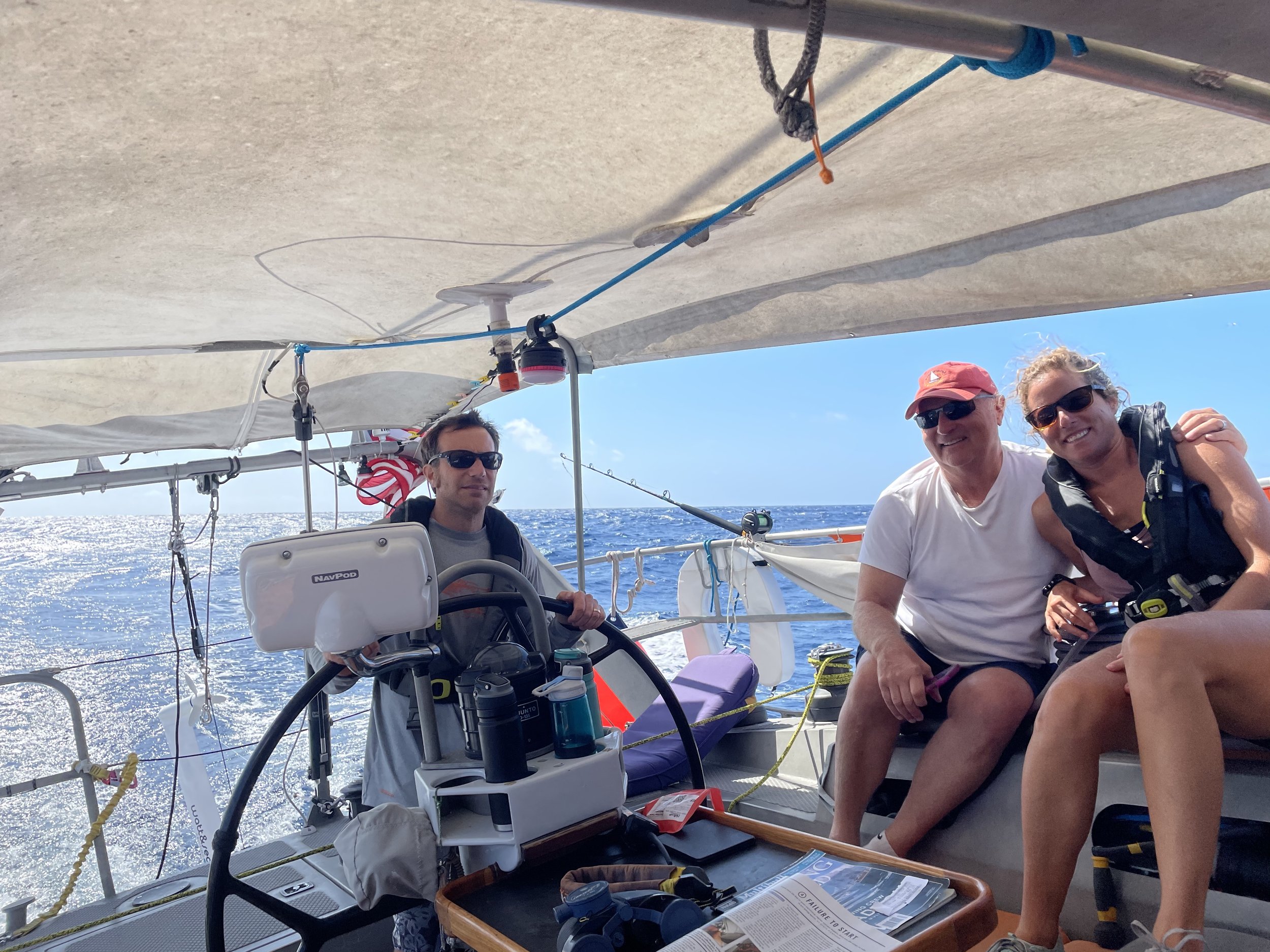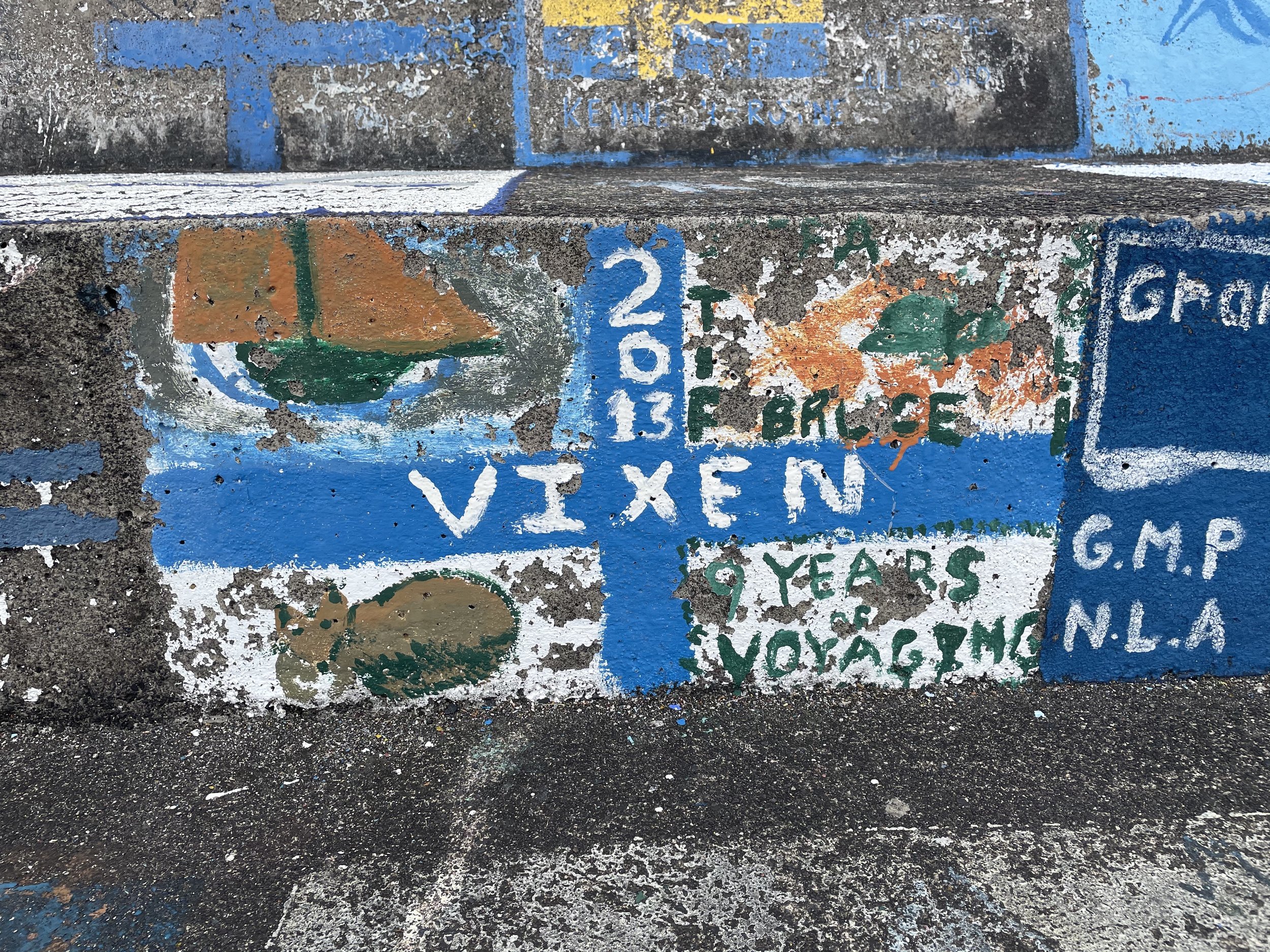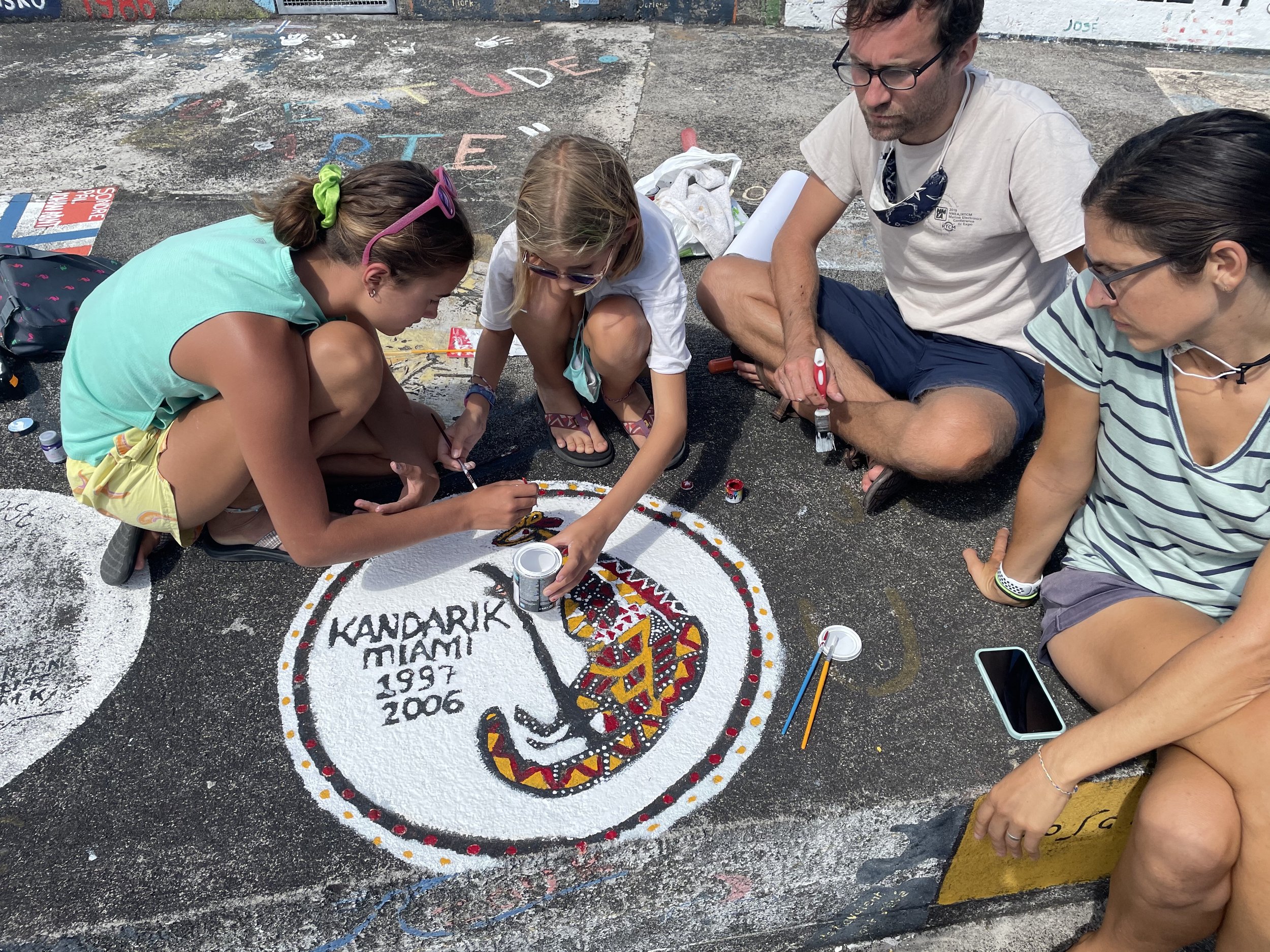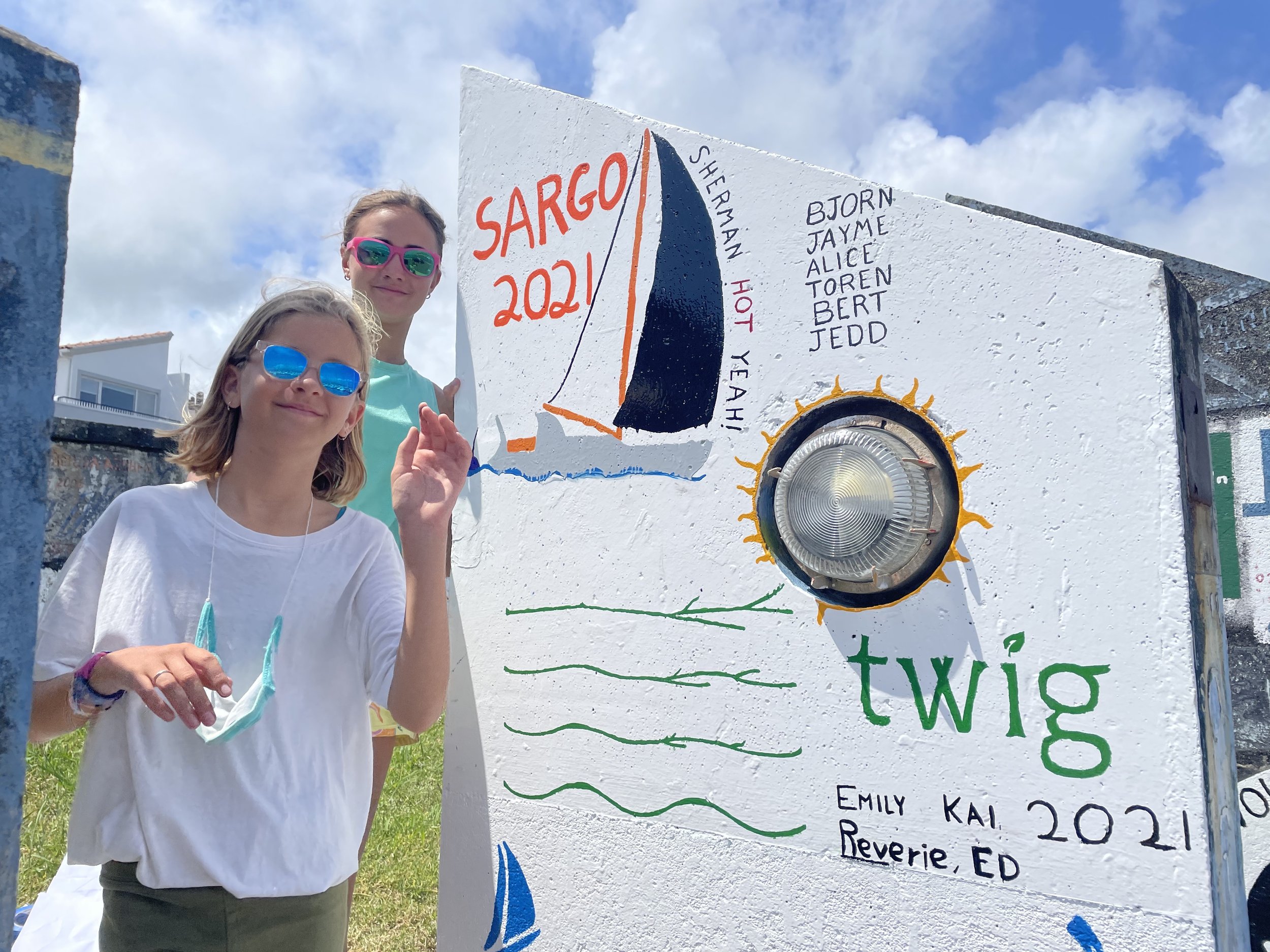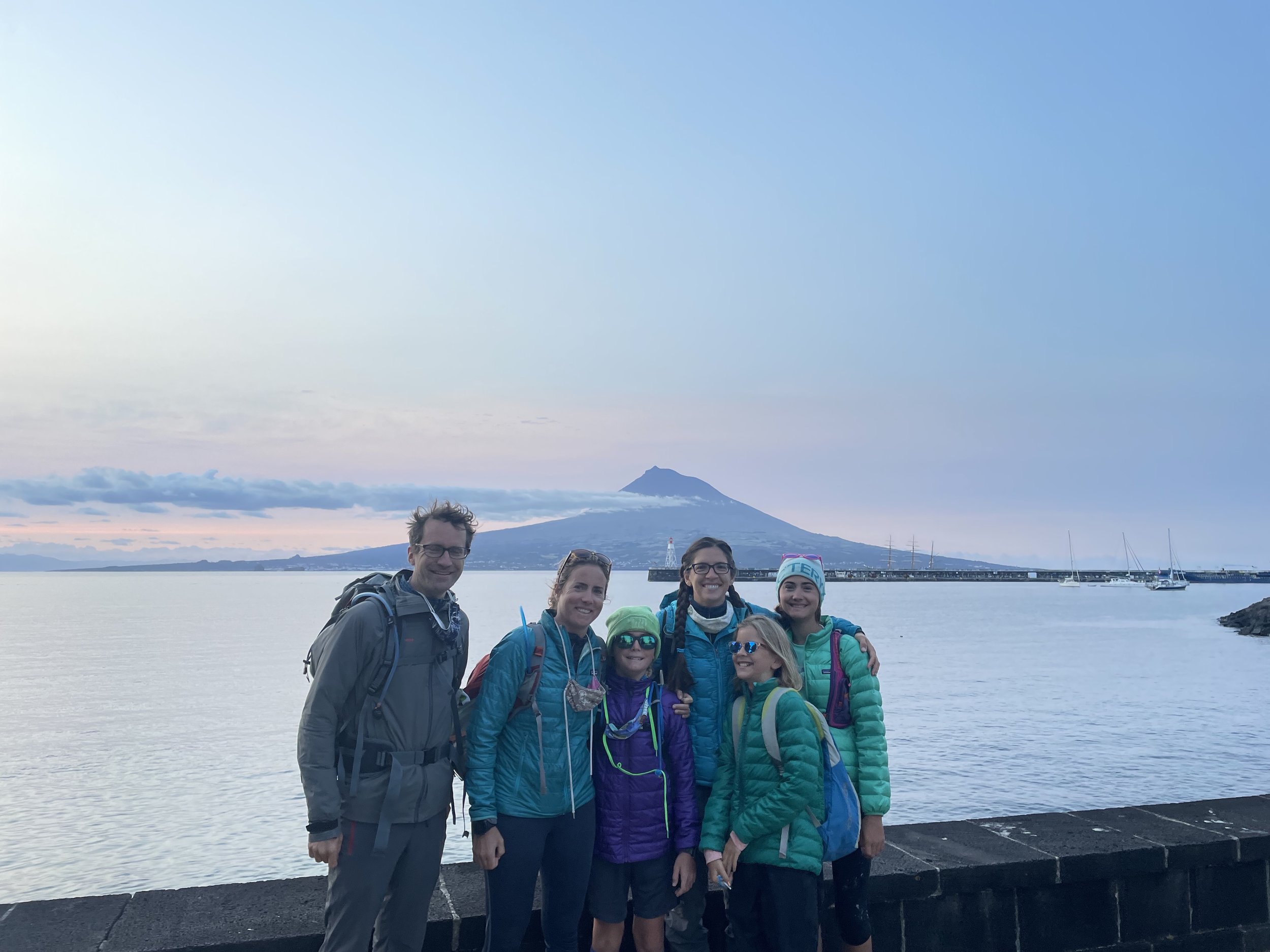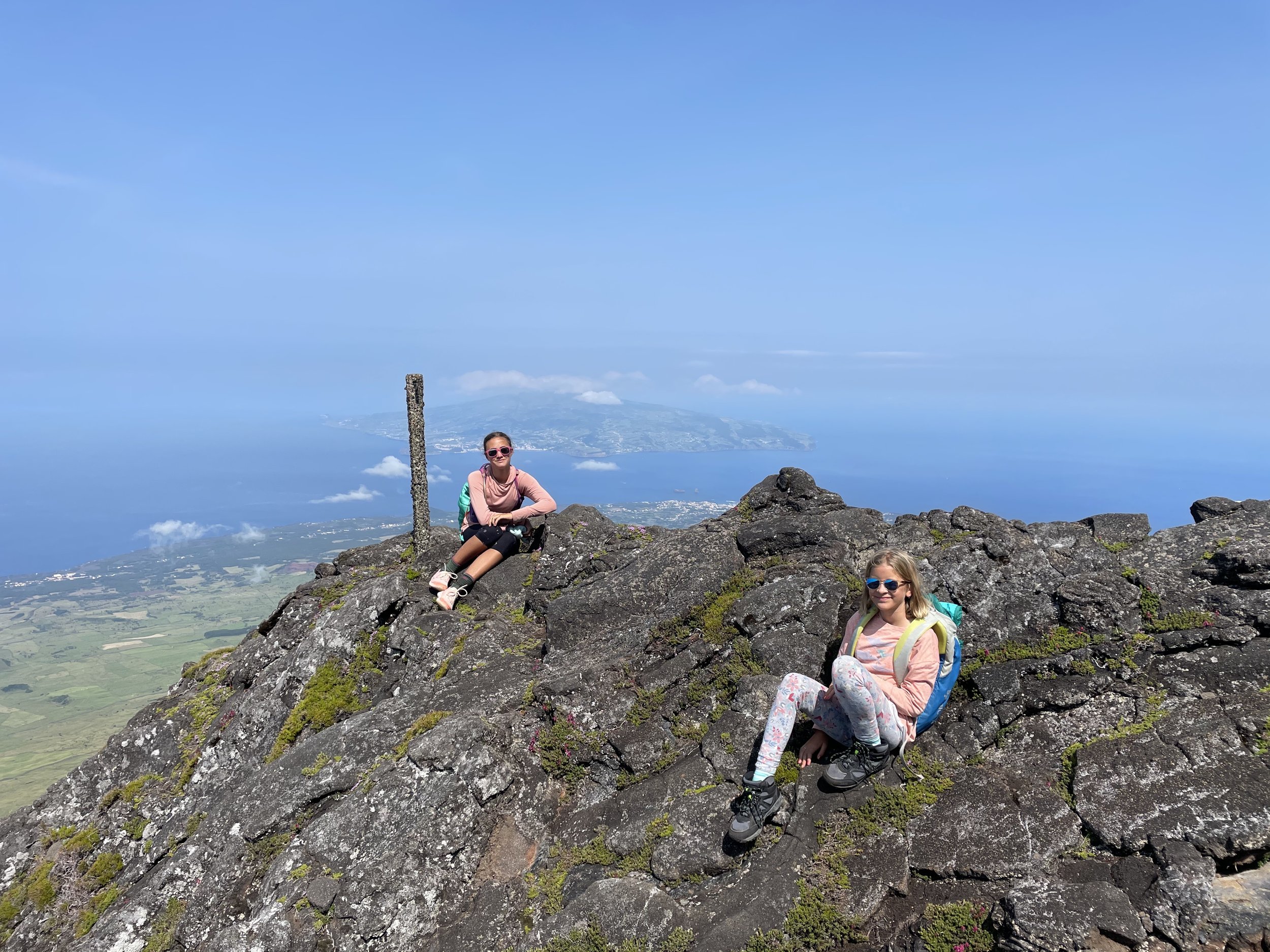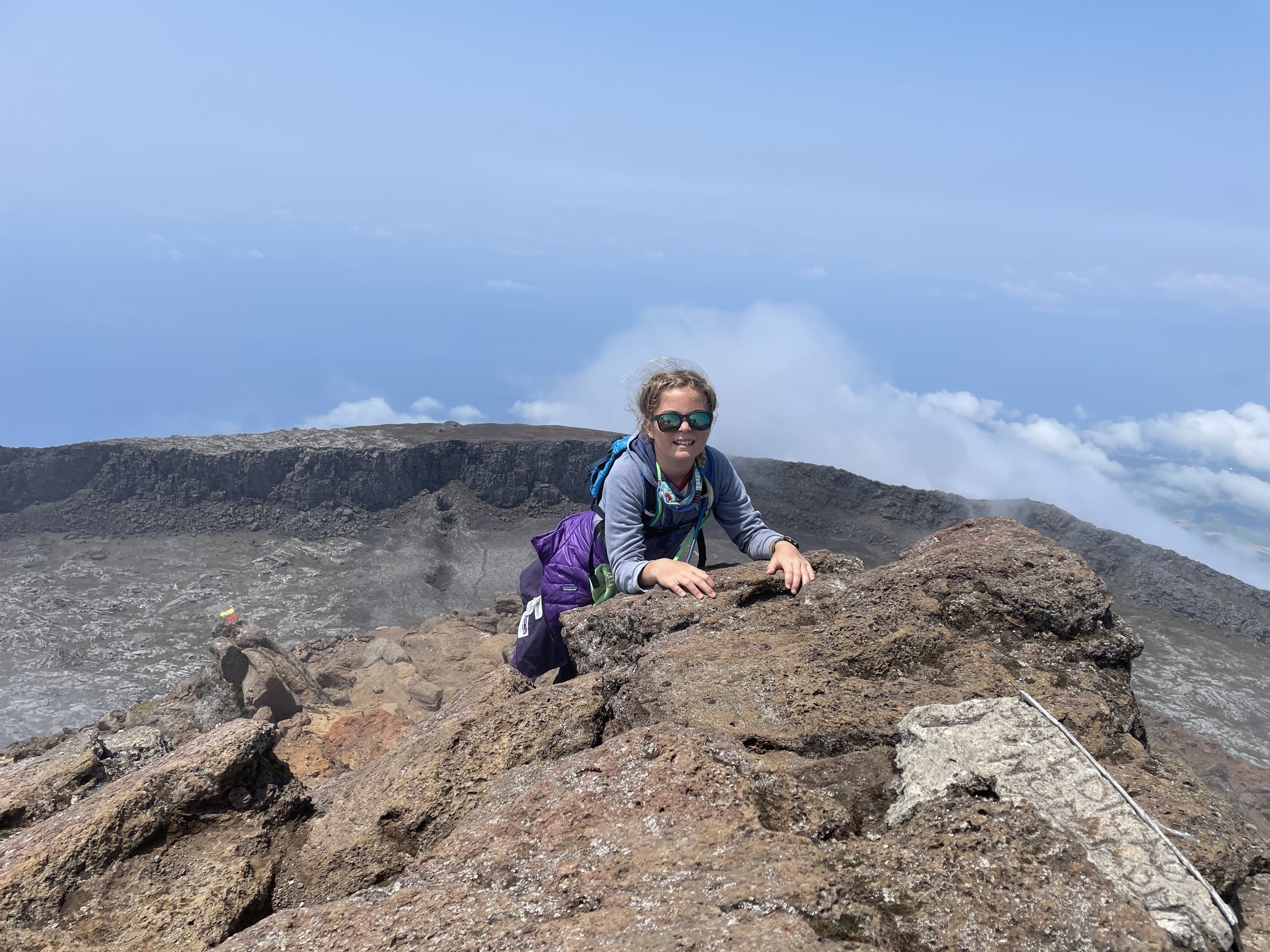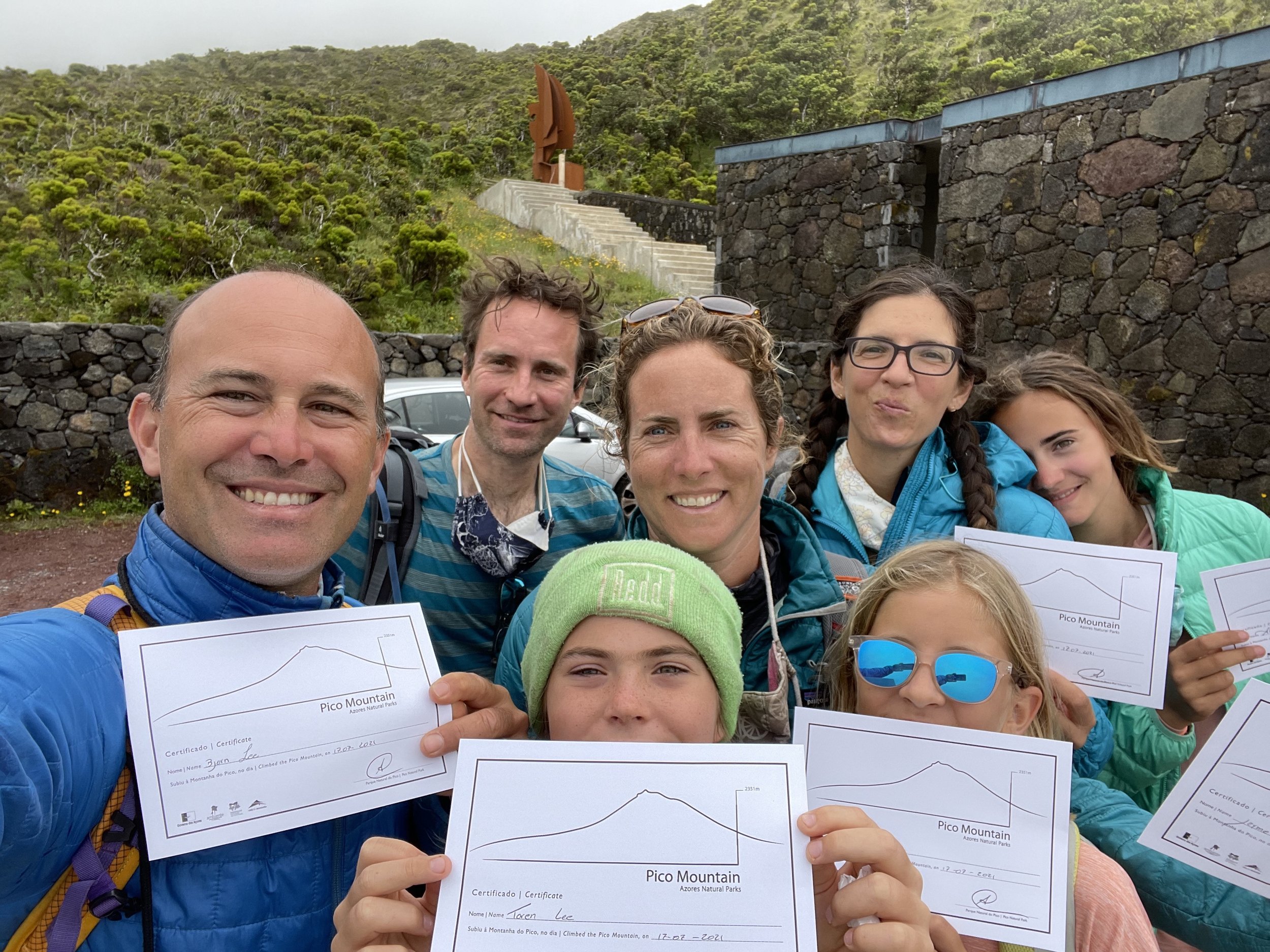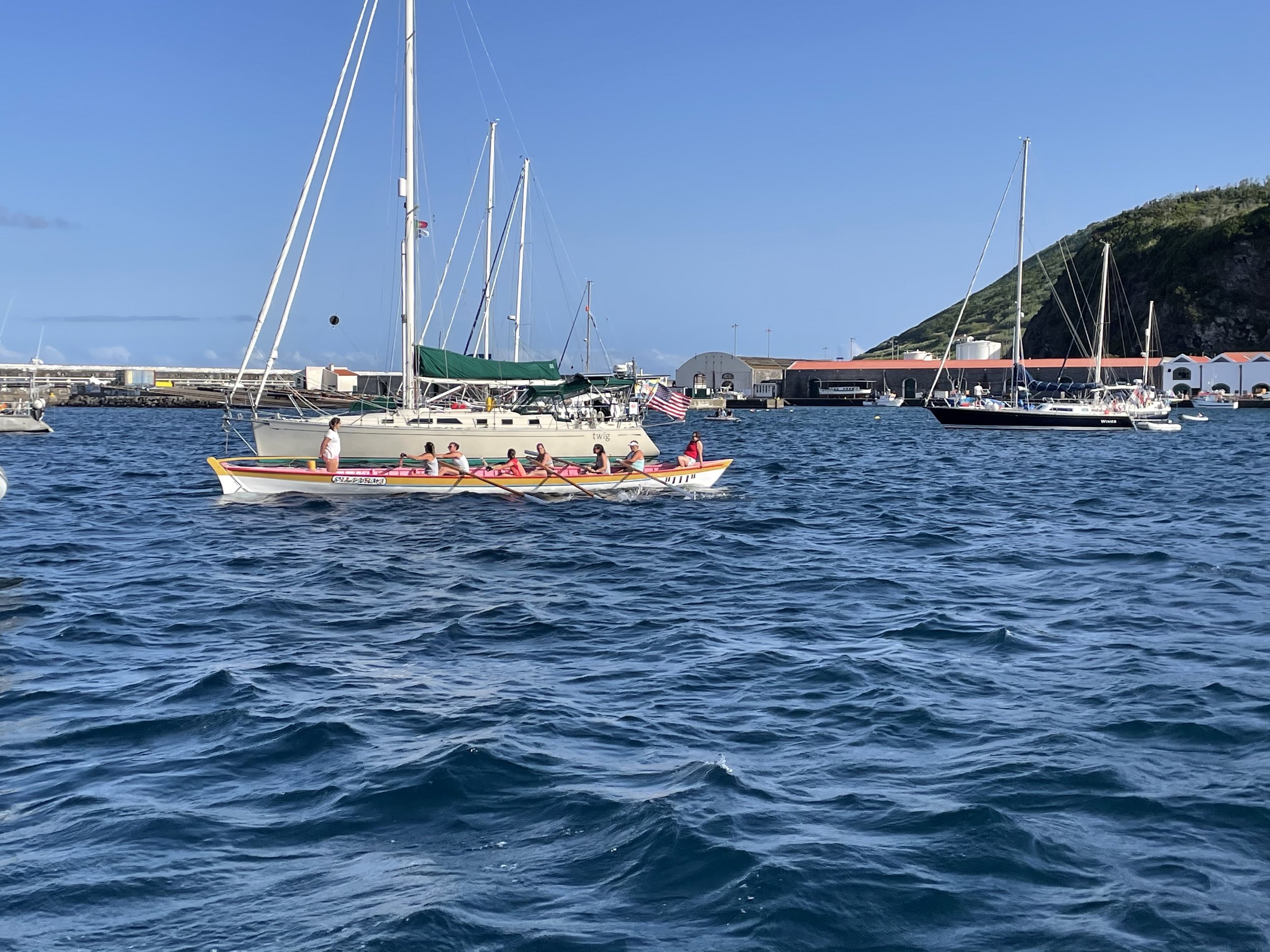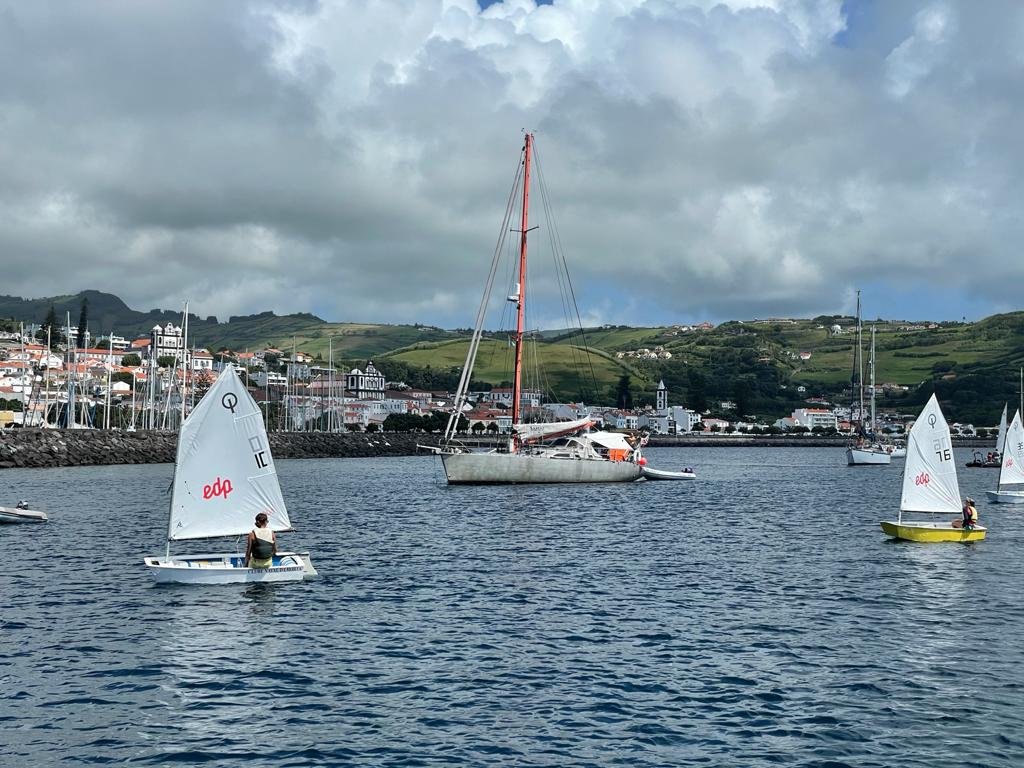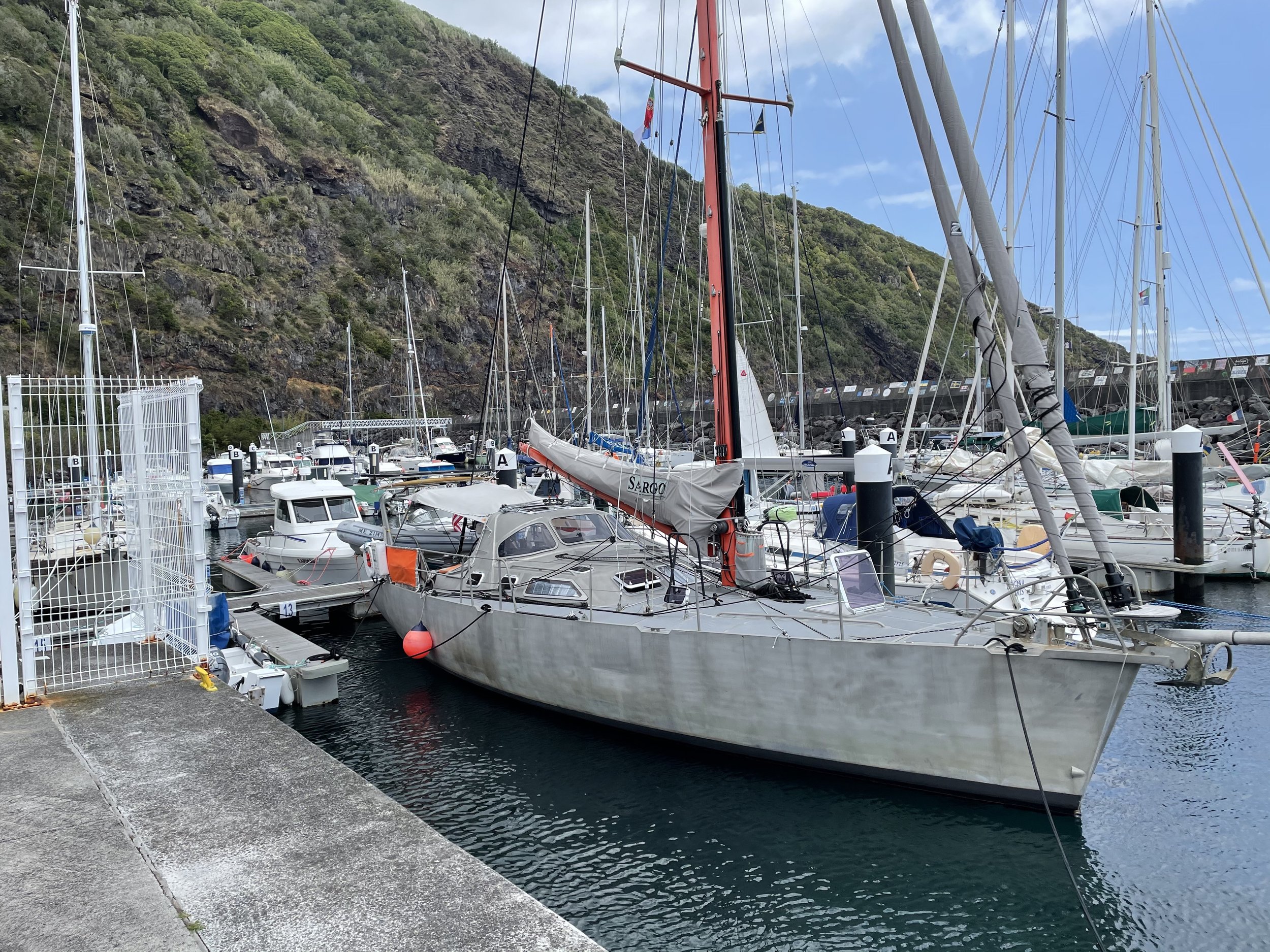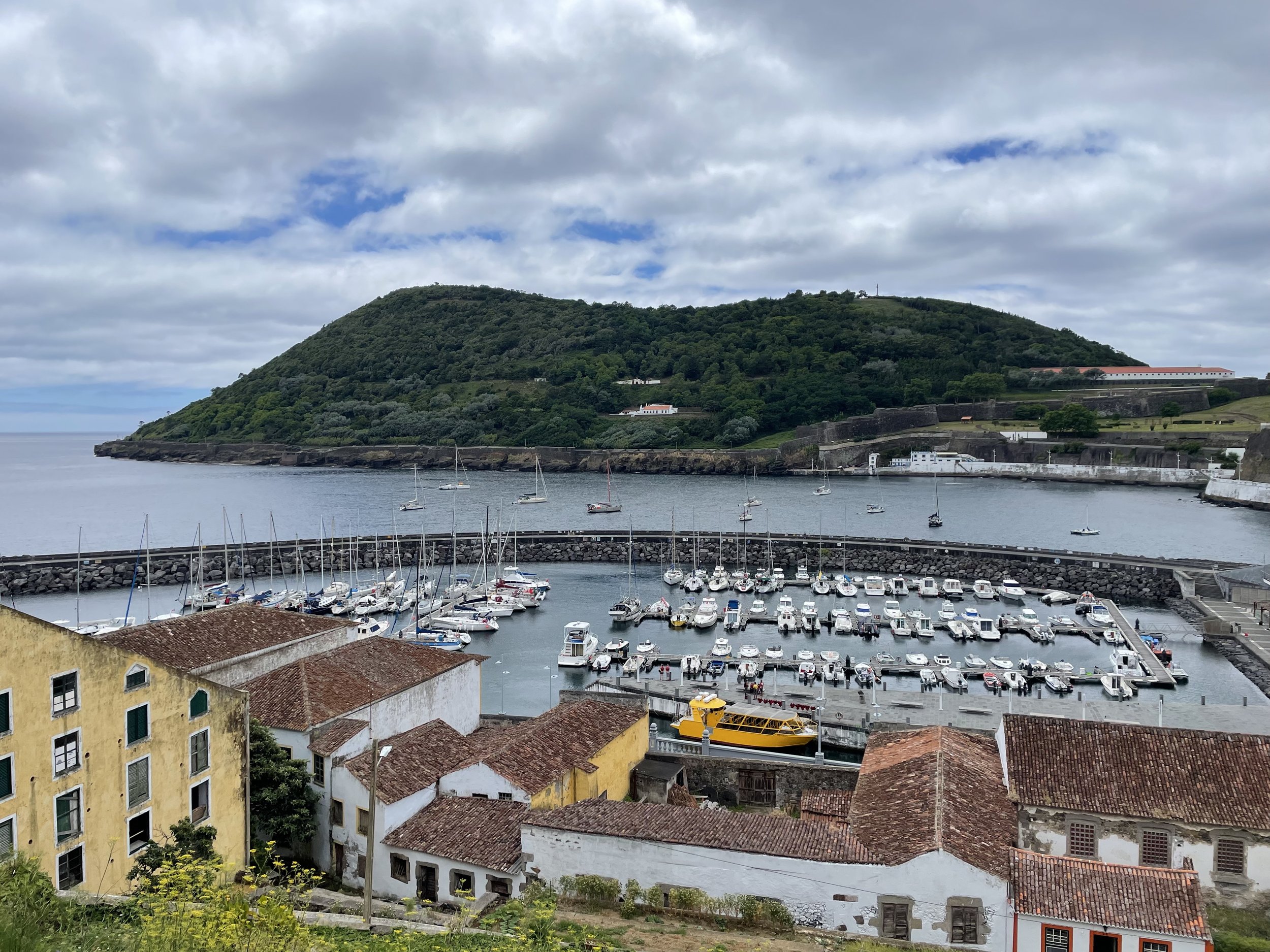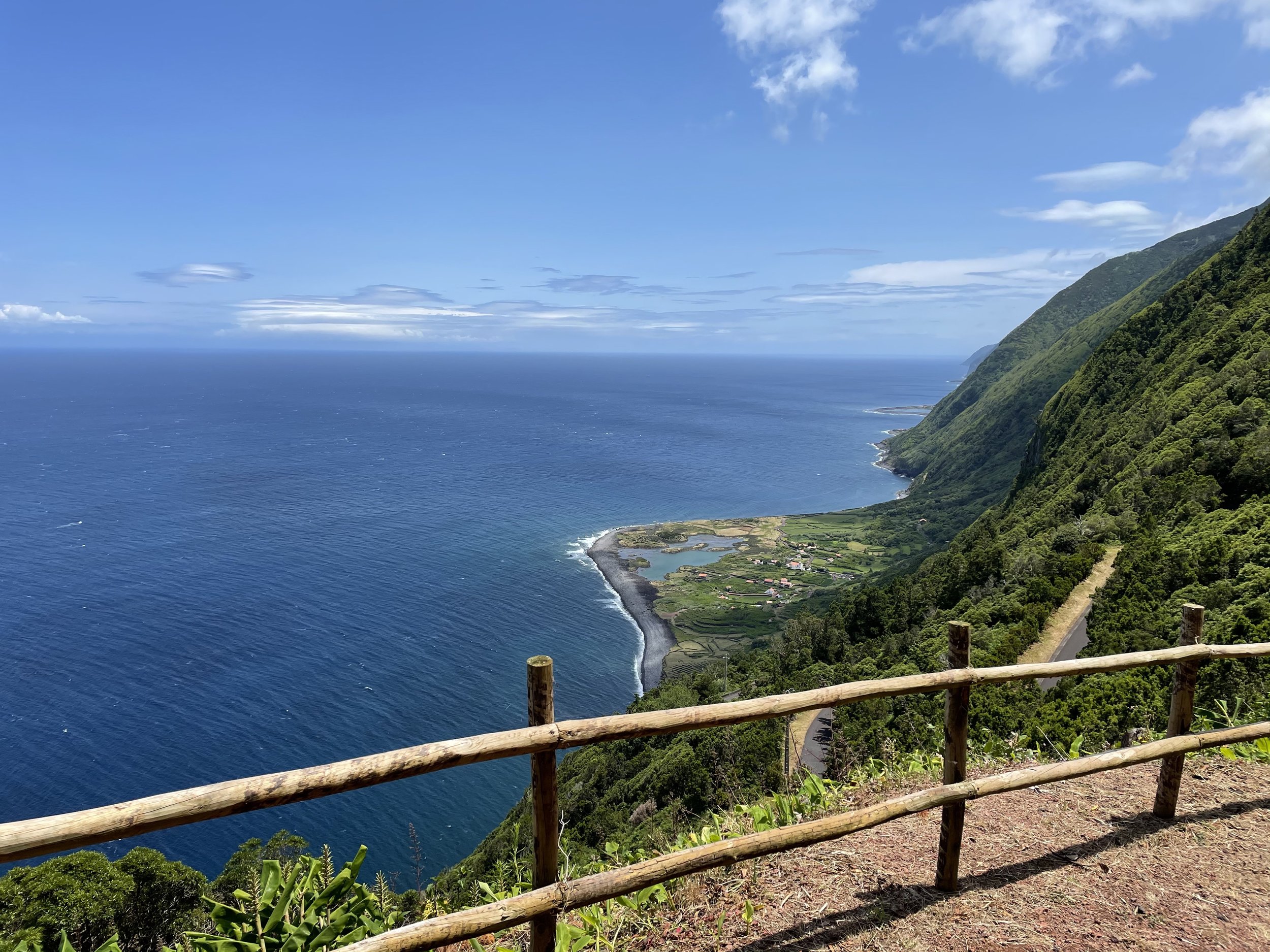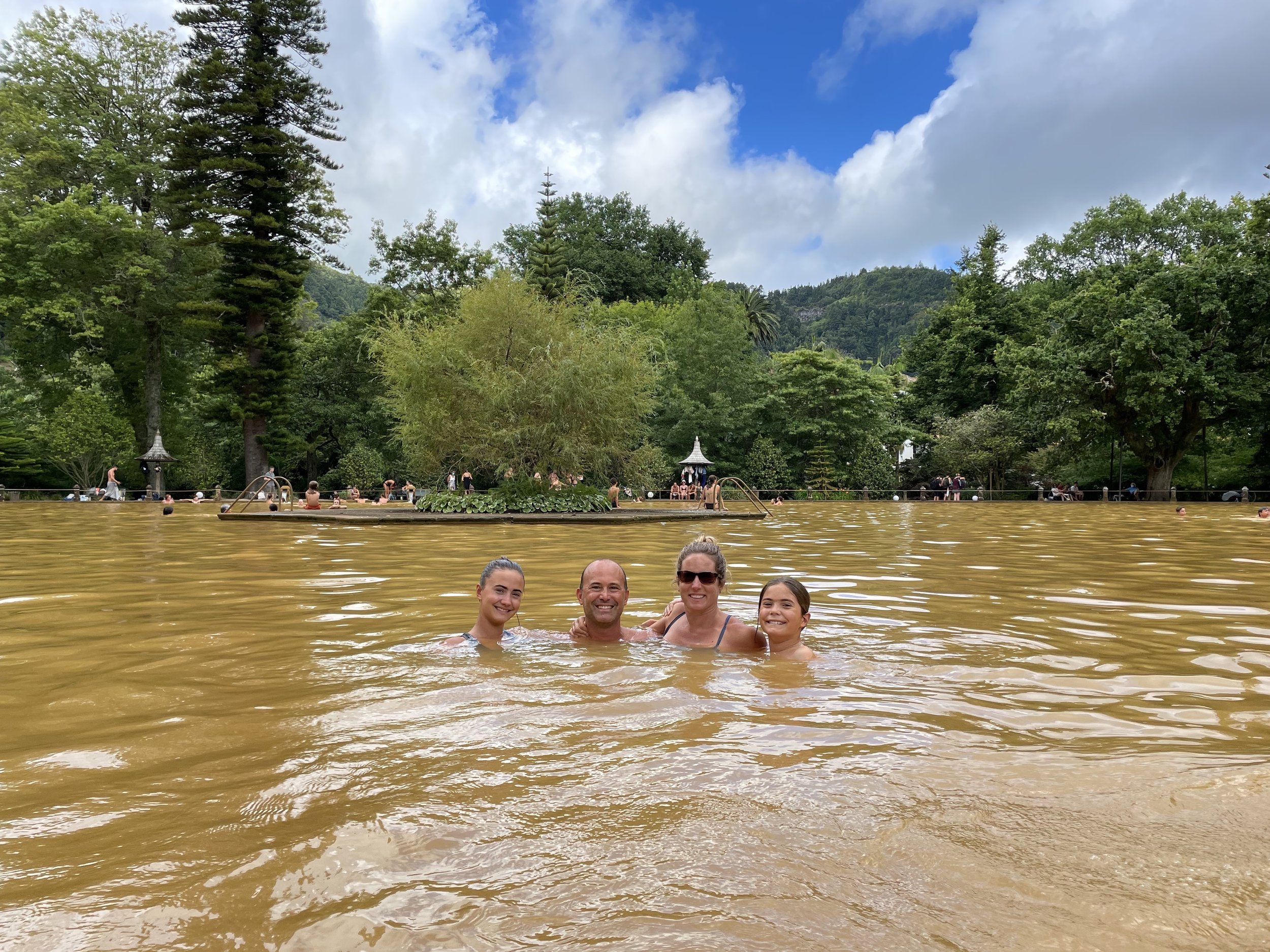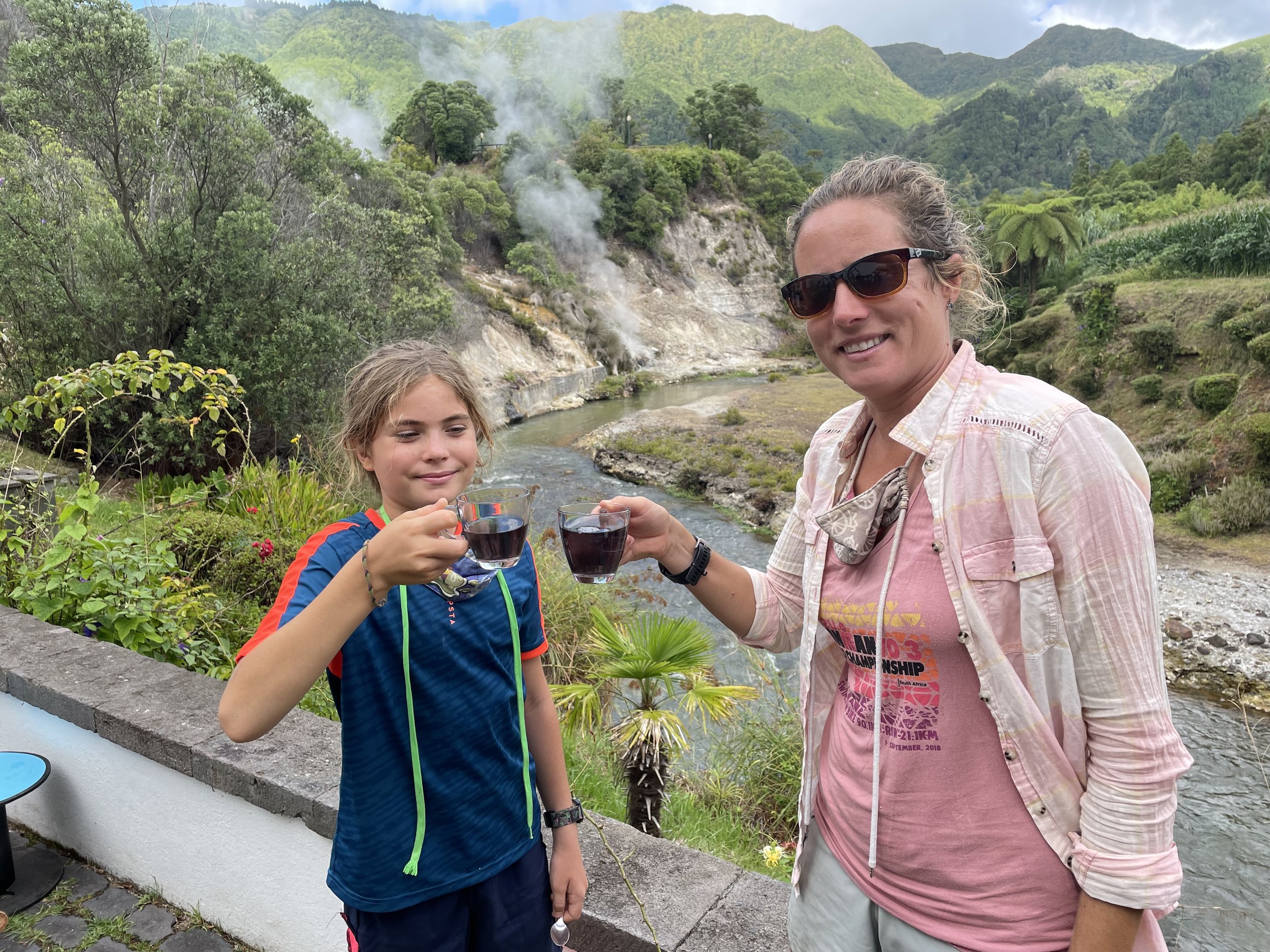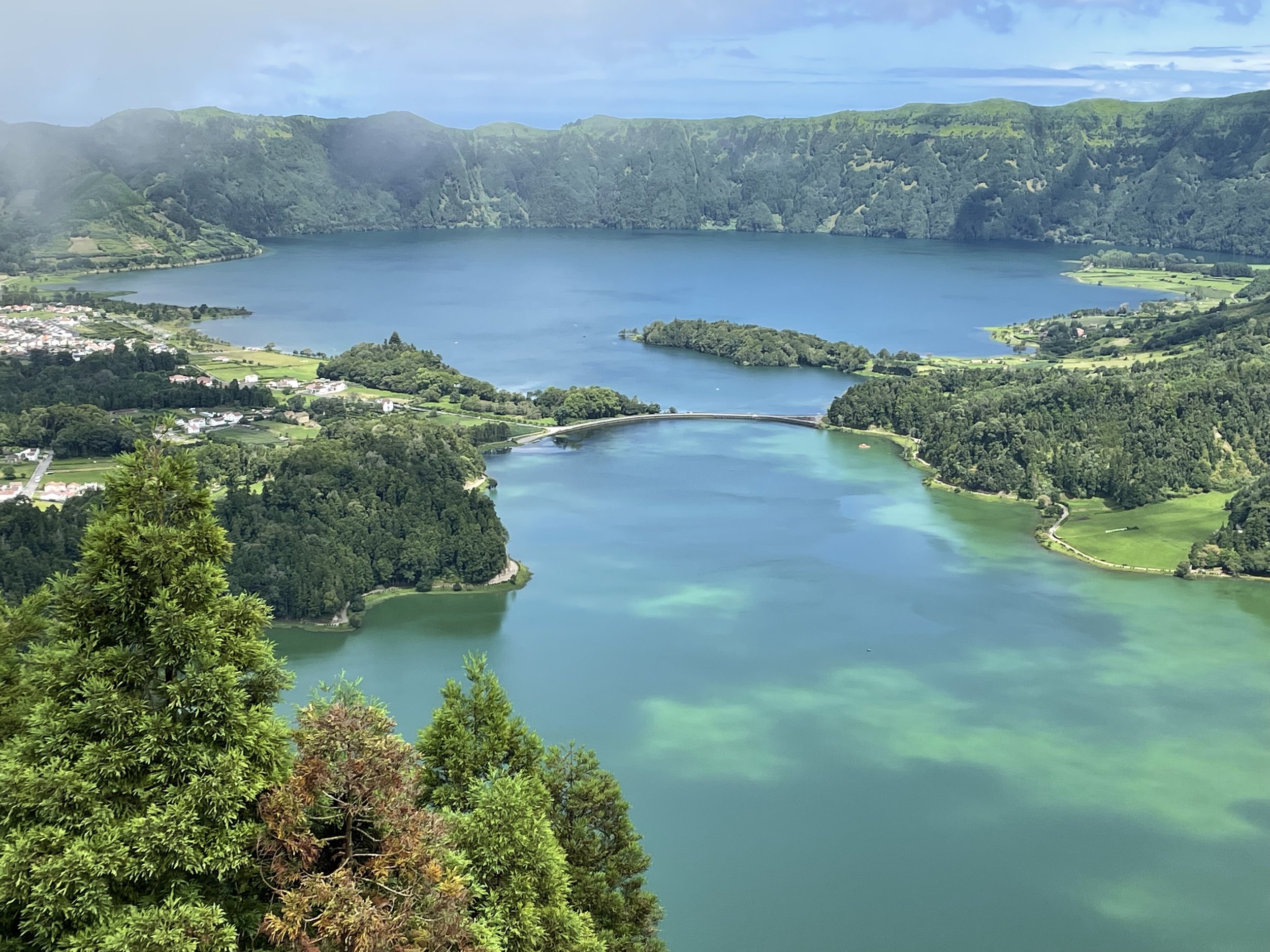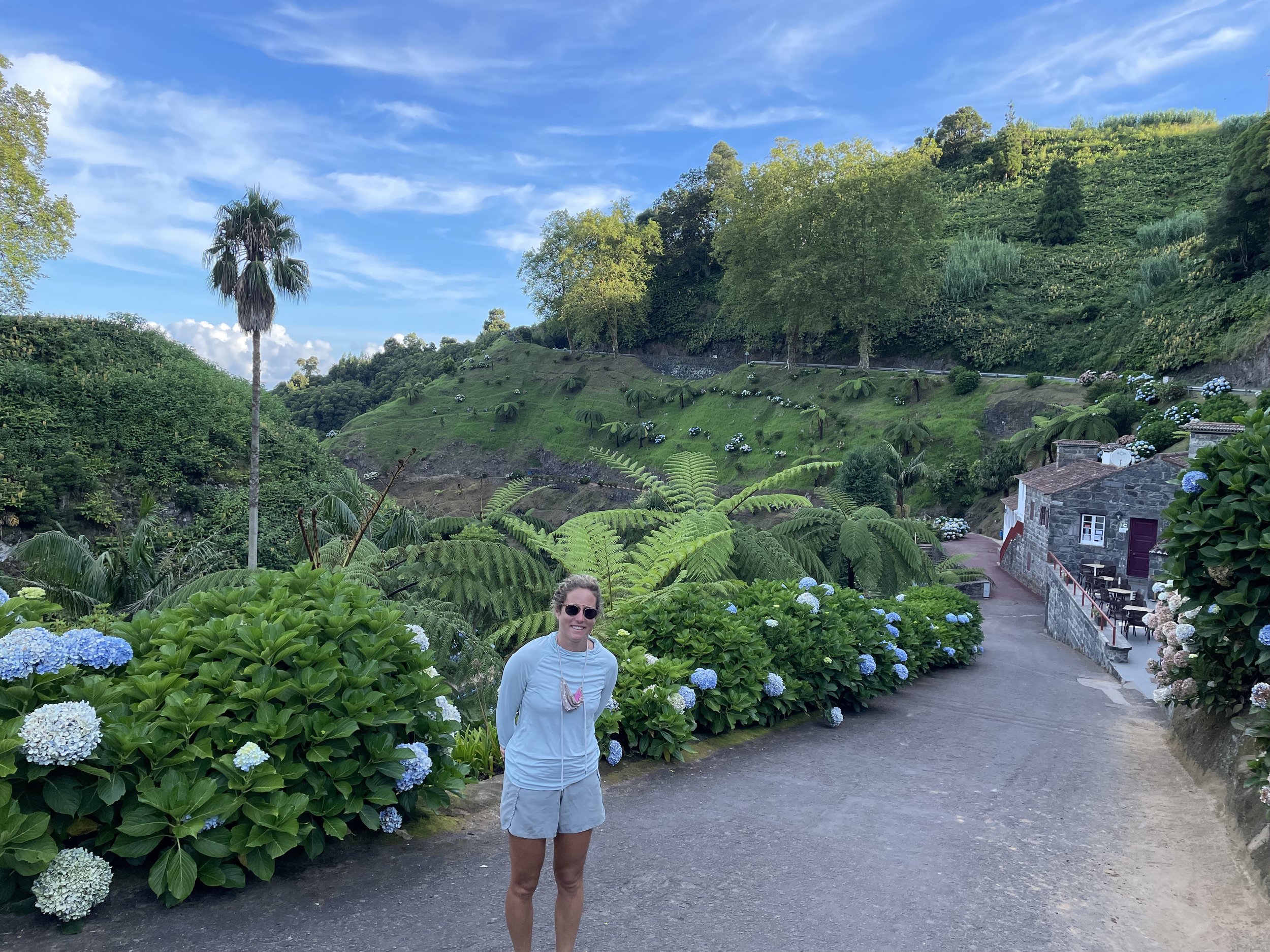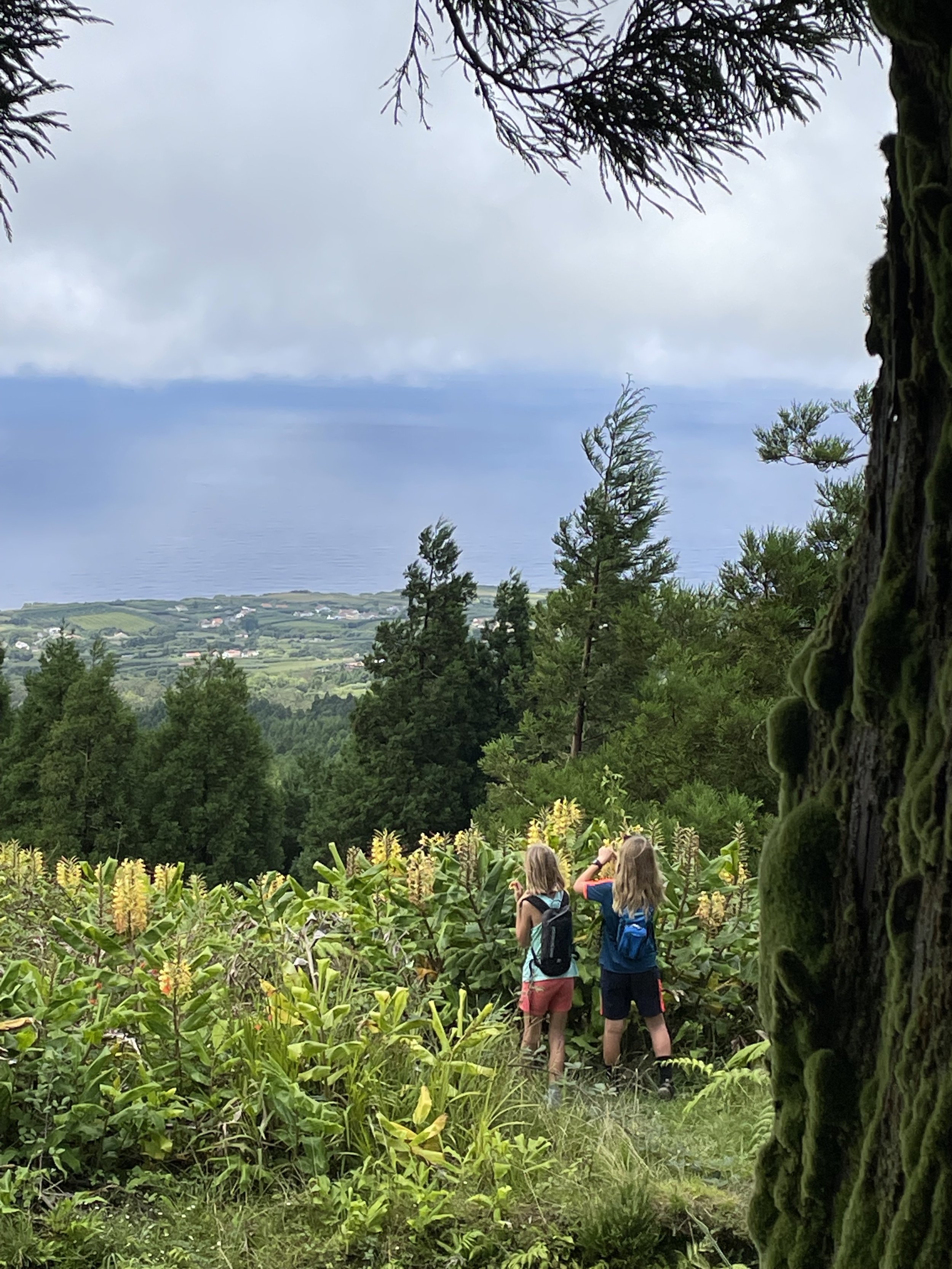Sargo's Atlantic Crossing - Leg 2: Bermuda to the Azores
Leg 2: Bermuda to the Azores
Our crew was safely on board, everyone was healthy, Sargo was packed with provisions and prepped for offshore sailing. We anticipated a fourteen day crossing of at least 1800 NM. On June 27th we cleared customs at 8:30 AM and had the anchor up by 9 AM. We got our clearance from Bermuda Harbour Radio and headed out St. George cut - next stop Azores!
But first, a bit of the back story on choosing our weather window, as this had been a big part of our life for the preceding months.
There is quite a lot of strategy to an Easterly crossing of the Atlantic. The best time of year is May-June before there is a risk of Hurricanes coming from the south east and after most of the northern Atlantic gales have passed. Sargo’s crew likes to sail in the best weather we can find because it is more comfortable and safe - hence waiting for the end of June to leave Bermuda. The next part of the strategy is monitoring the Azores high, which is pushed back and forth across the Atlantic between Bermuda and the Azores. It is influenced by the Jet Stream and by low pressure systems from the North. If the high stretches all the way across between Bermuda and the Azores it can mean very little wind and a slow crossing. Because the crossing can take two weeks we could only really have a reliable forecast for the first five days, so we monitored the patterns setting up the high to be in the best place possible for our crossing. When Twig left Bermuda, the high was more South. This means they were able to pick up perfect and consistent westerly winds right from Bermuda and ride them across the top of the high almost all the way to the Azores. This made for a fast sailing passage with little motoring. Soon after Twig left, the high moved further North and didn’t budge.
Two weeks later, Sargo’s forecast looked like the high would establish and move south, but we would have a few days of little wind getting North to the edge of the high where the wind was. Once in it, we could ride it East, staying ahead of a low pressure system with a cold front coming in from the North with adverse wind and bad weather. This is what we did and the plan worked well. We headed almost due North out of Bermuda for three days before finding the edge of the high where the Westerlies were filled in. Once in the wind we headed due East for the Azores in consistent 15-20 knots of perfect down wind sailing for days! With four adults on board we could push hard and keep Sargo sailing fast, staying ahead of the Low developing behind us (with a little hitch above the 40th parallel for some extra wind and current). Our luck held out almost all the way across, with the wind finally dying out a day and a half from the Azores. Calms around the Azores are very common in the summer. We motored for about a day before finding favorable wind again for a beautiful day of sailing right into Horta on the island of Fial, Azores.
Another part of the crossing strategy is current. The Gulf Stream is pushing westerly across the Atlantic above Bermuda towards Europe, sending off current gyres as it goes. Part of our daily weather monitoring and strategy was to get the current forecasts and work to keep Sargo in favorable current along with the good Westerly wind. We had great help from our friend Jamie on Sailing Totem, who watched the overall weather patterns and provided weather and course insight for the crossing. Sargo stayed in the favorable current almost the whole crossing, jumping from one gyre to the next and adding significantly to our overall boat speed. [Side note: Jamie and his wife Behan offer great coaching services to aspiring cruisers!]
Our crossing of the Atlantic was one of those magic times in life when time seems to stand still. Our focus was on the boat, the crew, and the conditions around us. Days blended into days with the rhythm of standing watches and beautiful sailing conditions. Jedd and I were up early making important decisions such as should we have coffee before or after putting the spinnaker up for the day. Alice and Toren stood regular watches during the day and then again in the early evening with their Papa. Days were spent tending the fishing lines, monitoring the sails, checking the weather, reading, napping, and hanging out together in the cockpit. The crew would all come together for a Captain’s Hour and then dinner in the evening.
Our spinnaker did a lot of work on the passage and we decided it needed a name. Names were put forward for a vote. The kids conspired against us and packed the ballot box to force a win for : Count Dukoo. The adults promptly cried voter fraud and demanded a revote using only the top three choices. We also considered changing the voting age to 13 but this was met with much resistance by a certain 11 year old. The vagaries of a democracy! Our spinnaker is now named “Sherman” after the donkey in Jayme’s favorite book - Running with Sherman. Sherman is a sensitive yet reliable donkey if treated right, which is a lot like our spinnaker.
We also had a late entry in via satellite text communications from Jedd’s daughters. Eliza age 4 suggested Rainbow Sparkle, but since the sail is flat black that didn’t feel right. Natalie aged 2 promptly cried out “ Hot YEAH! So we are running with Sherman, Hot! YEAH! Now our spinnaker has a name and Sargo has a battle cry!
Sailing into Horta harbor on the island of Fial from the West is another of those sailor’s lifetime check boxes. It is a special moment to be dreamed of and then savored when it does finally happen. If you’re a 14-year-old teenager, like Alice, it is at least worth coming out of your cabin for a peek. Our landfall was about as ideal as could be asked for. The sun rose on a beautiful day and the wind filled in from behind. Up went Sherman, Hot Yeah! Late morning clouds appeared to condense ahead suggesting an island. Then a lush, green, volcano shaped island rose out of the sea. It is said that the legend of Atlantis is based on the Azores. After days at sea, one can’t stop looking at the color and suddenly you really want to be at anchor and ashore. We came under the lee (wind shadow) of the island by late afternoon, taking in sail, and began an impatient motor to Horta harbor. Arriving from the west you pass close to a small volcano jutting out into the sea, then there is a long sea wall creating the harbor. Countless masts rise over the sea wall, which is then rounded to port, and then you are in the harbor surrounded by what are obviously ocean going sail boats. No power boats here - this is a sailor’s harbor! Sargo dropped the anchor around 6 pm right next to Twig, who along with other friends, provided a wonderful and loud welcome. Atlantic crossing Leg Two complete. Twelve days, 8 hours from Bermuda sailing 1970 NM with an average speed of 6.7 knots.
After a celebratory dinner, Sargo’s crew got a good nights sleep, got through the check in process, then set about exploring this new town, island, and country. Bert and Jedd had to fly home too soon, but we got in the vitally important tradition of Gin do Mar’s at Peter’s Cafe Sport and a quick tour of the island. With our crew gone, Sargo slipped back into our routine of life at anchor.
Another vital tradition for Atlantic sailors is leaving your mark on the seawall in Horta. Superstition has it that if you do not, you will fail to reach your next port. Sargo was not about to miss this tradition! We had fun finding paintings done by friends who had passed through before us, designing and painting our crew picture, and touching up friends’ older paintings.
A must for the Sargo Crew was to hike Pico, the highest mountain in Portugal at 2,351m. We had to get up very early to catch the ferry from Horta over to Pico. It was rough and steep hiking. We made it to the top by 1 pm, enjoying one of the rare days when it was clear. The view was amazing and the volcanic steam coming out the vents at the top a bit disconcerting. For a few minutes, we were the highest people in all of Portugal!
All of Sargo’s crew loved the Azores. These islands have so much to offer. We encourage anyone to put them on their list of places to visit - you won’t be disappointed! There is so much to tell about our time in the Azores, but we do need to get this blog across the Atlantic. We ended up spending almost two months in this amazing archipeligo, working our way down the island chain. The Azores are made up of nine volcanic islands right at the junction of three tectonic plates. Each island is subtly distinct in it’s culture, food, people, and dramatic geography. We visited five of the nine islands, and hope to return to visit the rest. Above are some of the highlights of our time cruising the islands.
Next up: Azores to the Portuguese mainland


